Since the advent of photography, humans have never been shy about documenting the world around them. Hundreds of trillions of photos have been taken since the first was snapped back in 1826, and today, the technology is more accessible than ever before. Yet beneath the Instagram selfies and endless memes, some photos served to capture rare moments in history like you’ve never seen them before.
This portrait of John Quincy Adams, taken in 1841, is the oldest surviving photo of any U.S. president. Quincy Adams was the 6th POTUS. He would only serve one lackluster term and was not incredibly popular — and famously hated this portrait. Tough luck, Prez!
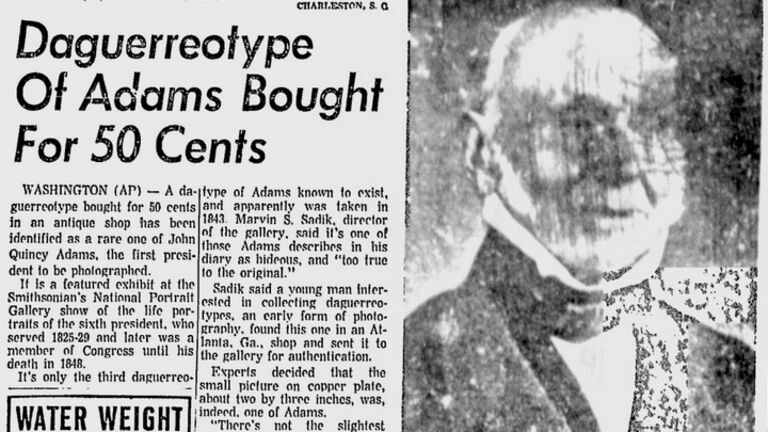 Wikimedia Commons
Wikimedia Commons
Thomas Sutton, a masterful photographer and innovator, developed the first wide-angle lens and produced the first color photograph in 1861. For this shot, Sutton teamed up with a theoretical physicist to combine three negatives into a single image.

The nuclear arms race was in full swing in 1945. Atomic bomb tests were surprisingly commonplace occurrences, and physicist Jack Aeby was tasked with documenting the very first detonation of a nuclear device. This image, the only well-exposed color photograph of the test, was the result.
 Wikimedia Commons
Wikimedia Commons
This picture of Abraham Lincoln’s dog Fido provides a glimpse into the personal life of the legendary president, who often sought comfort in his beloved animal. The dog made history by being so darn adorable.
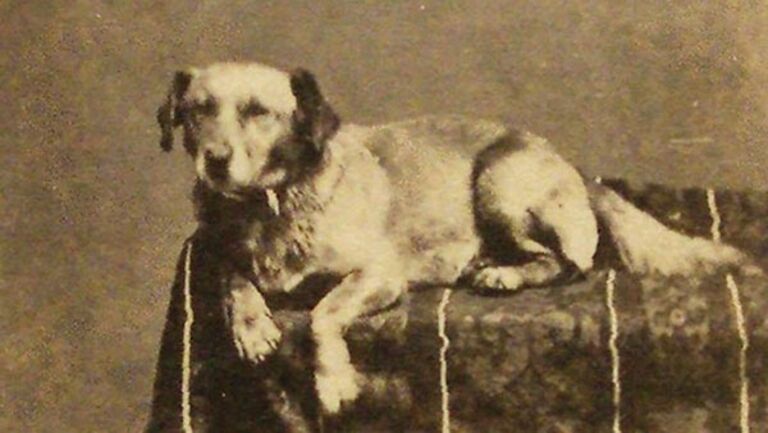 Gilder Lehrman Collection & Gilder Lehrman Institute of American History
Gilder Lehrman Collection & Gilder Lehrman Institute of American History
In the mid-1940s, Germany was sending rockets into orbit in the hope of achieving space travel. Aboard one of these rockets was a mounted camera that snapped the first photo of Earth taken from space. To think people on Earth had never seen our planet from on high!
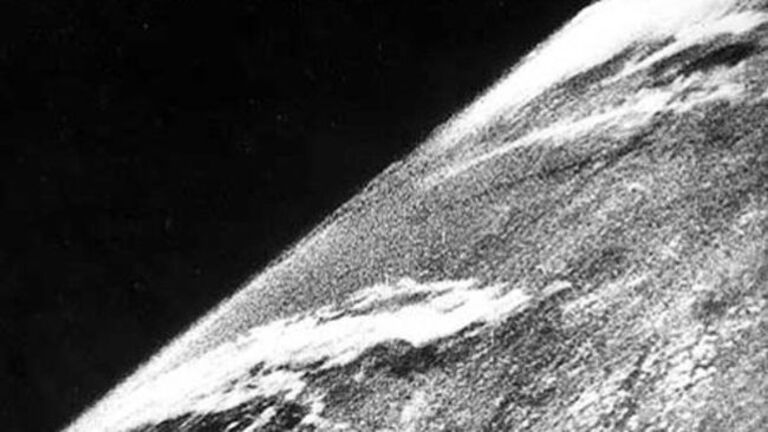 White Sands Missile Range—Applied Physics Laboratory
White Sands Missile Range—Applied Physics Laboratory
Every American is familiar with the iconic image of Uncle Sam. Pictured here is Walter Botts, the real-life inspiration behind James Montgomery Flagg’s iconic illustration. Who knew Uncle Sam was a real guy?
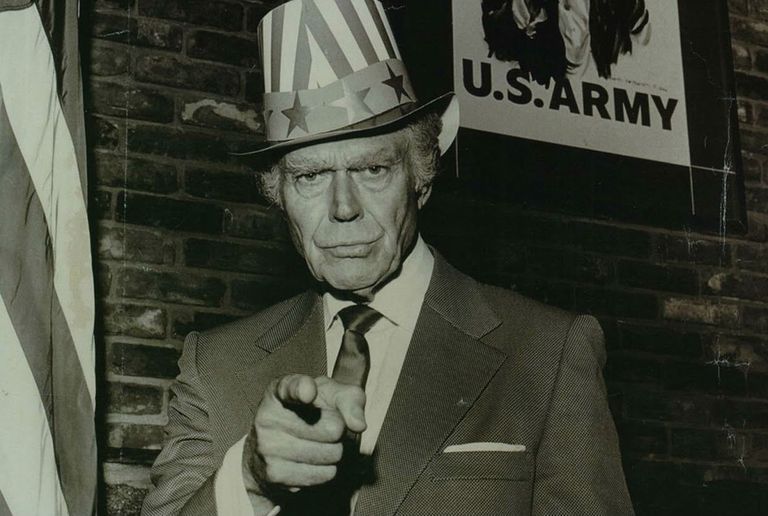
In the late 19th century, A.A. Adams observed a slow-moving cyclone wreaking havoc upon a tiny Kansas town. It was so slow that Adams had enough time to set up a box camera nearby and capture the bizarre phenomenon on film. Adams may be history’s first storm chaser!
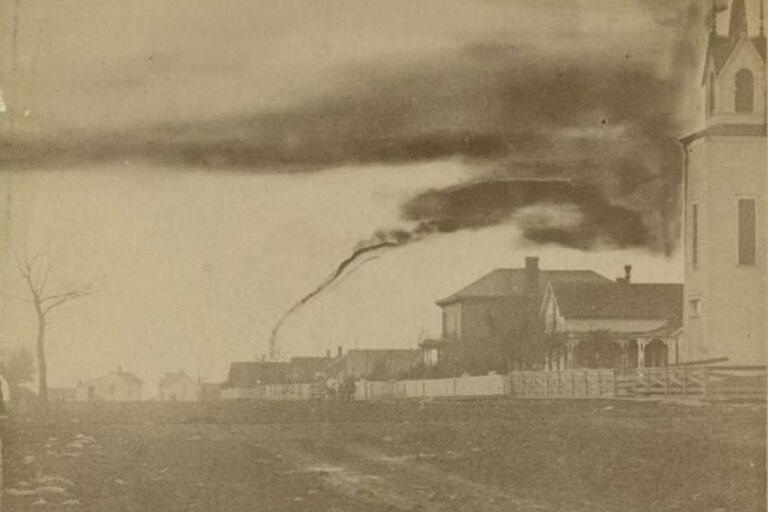 Wikimedia Commons
Wikimedia Commons
The Wright brothers conducted their first powered flight in 1903 — and they weren’t about to let anyone forget it. That’s why the aviation trailblazers put their camera skills to the test and snapped this photo of the historic moment.
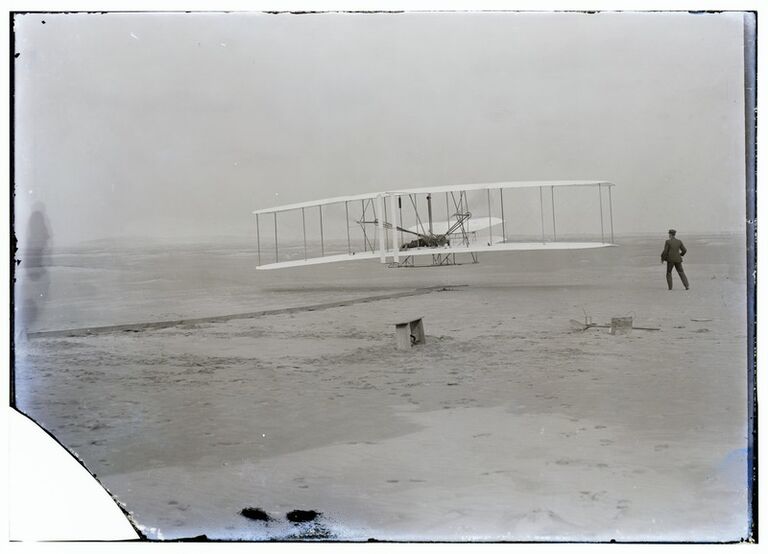 Wikimedia Commons
Wikimedia Commons
Zadoc Dederick was an imaginative inventor with a penchant for creating unique machines. The “Steam Man” was a whimsically constructed automaton, and while it may have been impractical, Dederick’s work would later serve as a huge inspiration for modern steampunk enthusiasts.
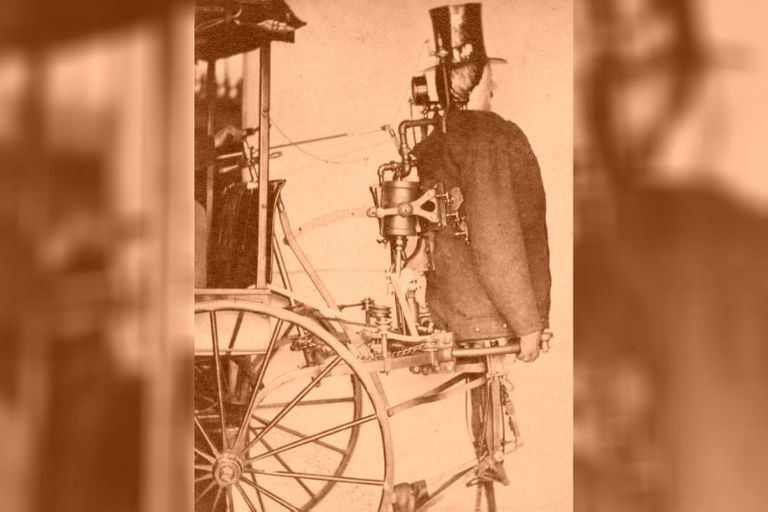 Wikimedia Commons
Wikimedia Commons
Speaking of making history, in 1933 Margaret Gorman became the first Miss America at the young age of 17. It was a landmark moment for American pageantry — and photography, too.
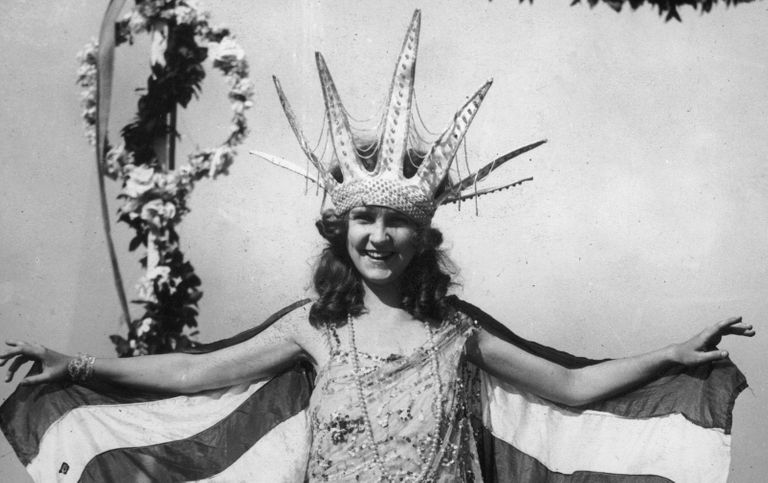 Hulton Archive / Getty Images
Hulton Archive / Getty Images
You are looking at the first flower to bloom in space. In 2016, astronauts aboard the International Space Station studied and documented the growth of flowers in microgravity, resulting in this incredible feat of human ingenuity.
 Wikimedia Commons
Wikimedia Commons
In 1838, Louis Daguerre became the first person to photograph another human being. The camera Daguerre used required his subjects to remain still for an extended period of time. You can just make them out in the bottom left corner.
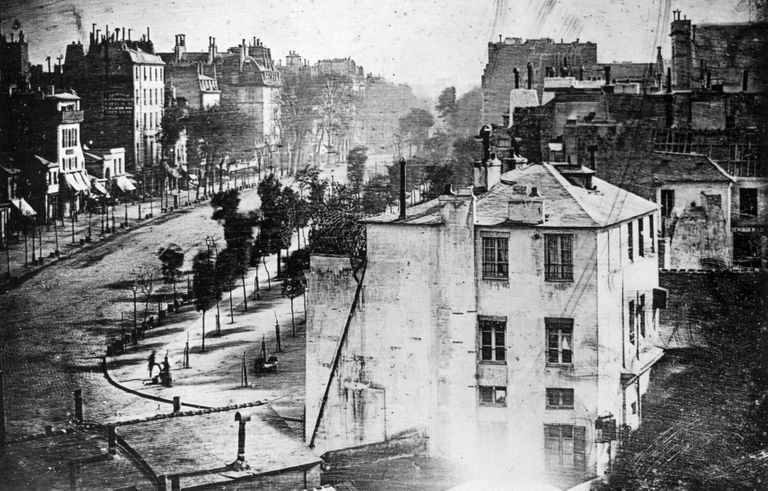 Wikimedia Commons
Wikimedia Commons
In 1886, the Statue of Liberty was presented to the American people as a truly grandiose gift from France. This photo shows the construction of the enormous monument in a Parisian workshop in 1884.
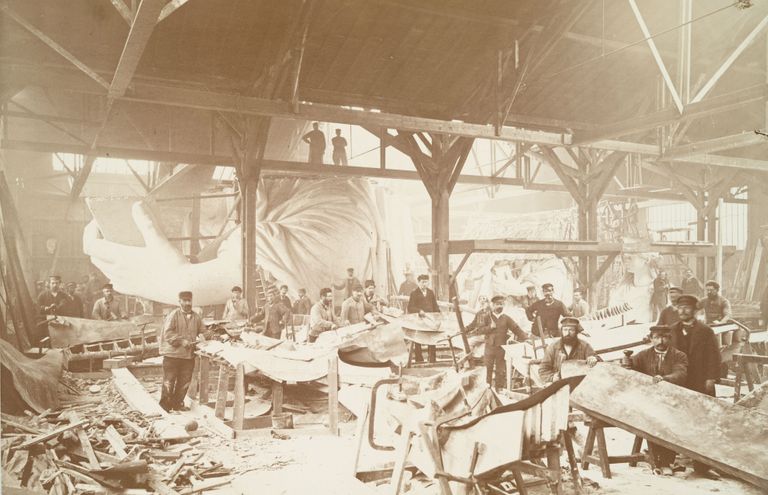 Wikimedia Commons
Wikimedia Commons
Robert Pershing Wadlow was an absolute anomaly, measuring a staggering 8’11” at age 22. He was so tall that photographs of him next to average-sized people looked doctored!
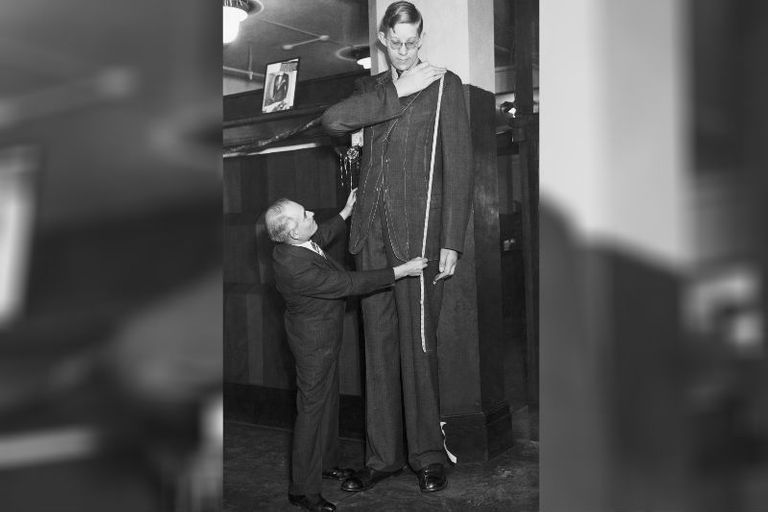 Bettmann / Getty Images
Bettmann / Getty Images
When the Nazis came to power, the world would forever change. In this powerful photograph, you can see a soldier refusing to salute the Fuhrer. The man in question would later be arrested for an illegal relationship with a Jewish woman.
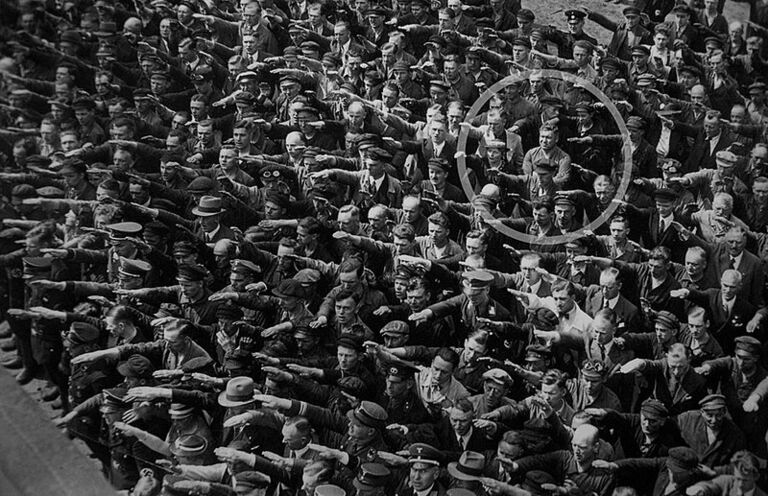 Wikimedia Commons
Wikimedia Commons
In 1972, Charles Duke became one of the first men to set foot on the moon. While surveying the lunar surface, the astronaut left a family photo that remains there to this day.
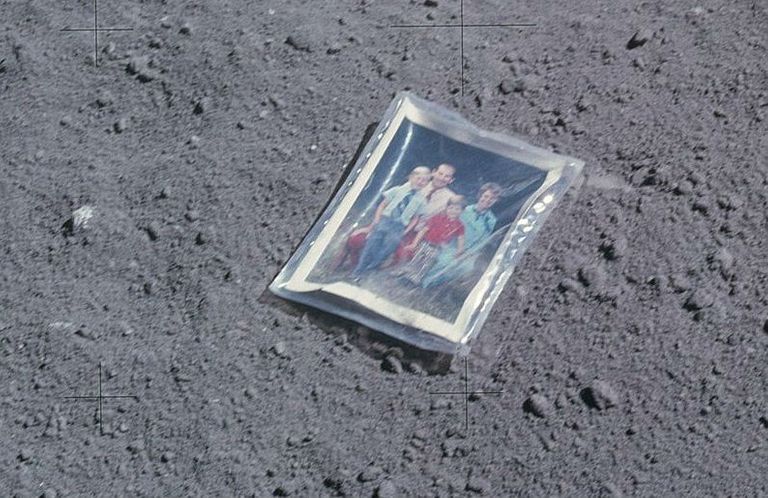 Wikimedia Commons
Wikimedia Commons
World War II took an unimaginable toll on American soldiers. However, this photograph depicts the joyous moment a mass of valiant soldiers returned to the United States aboard the massive RMS Queen Elizabeth.
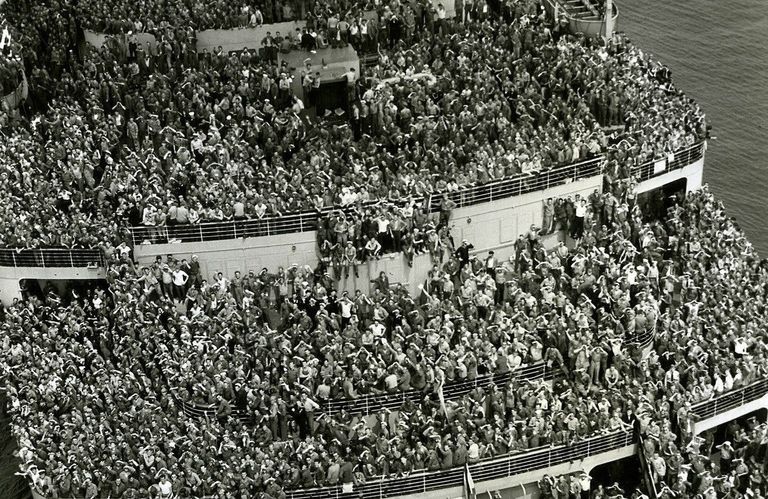 Crowe140 / Reddit
Crowe140 / Reddit
Although tattooing has been around for centuries, the practice remains a controversial topic. Here, we see a young woman almost completely covered in tattoos, which would have been incredibly taboo in the early 20th century.
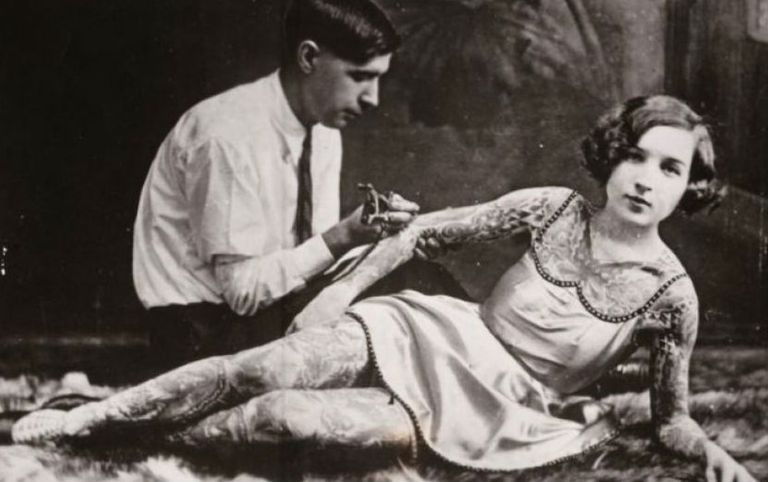
By 1927, the Ford Company had paved the way for automobile mass production. Using radio technology, the company installed the world’s first working in-car telephone, seen here in this 1924 photo of one of their vehicles.
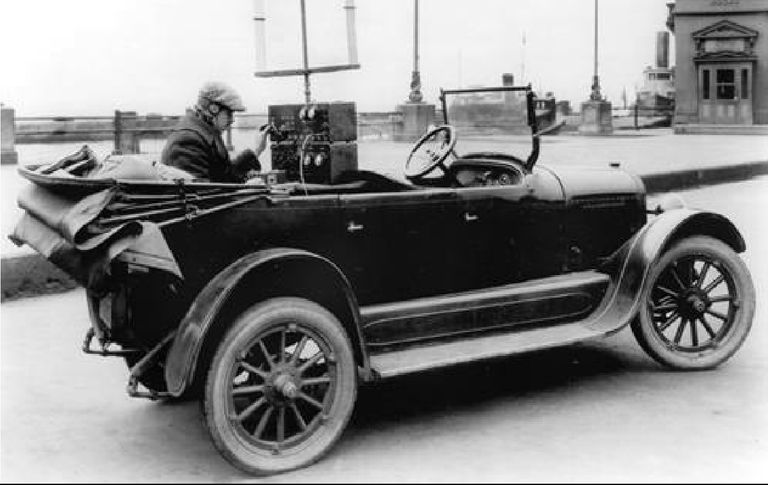 Wikimedia Commons
Wikimedia Commons
Pictured here is Olive Oatman, a white woman kidnapped by a tribe of Mohave natives. This amazing image shows Oatman bearing traditional Native American tattoos reserved for members of the tribe, indicating she may have become an accepted member of the community. Olive is the real-life version of Dances with Wolves!
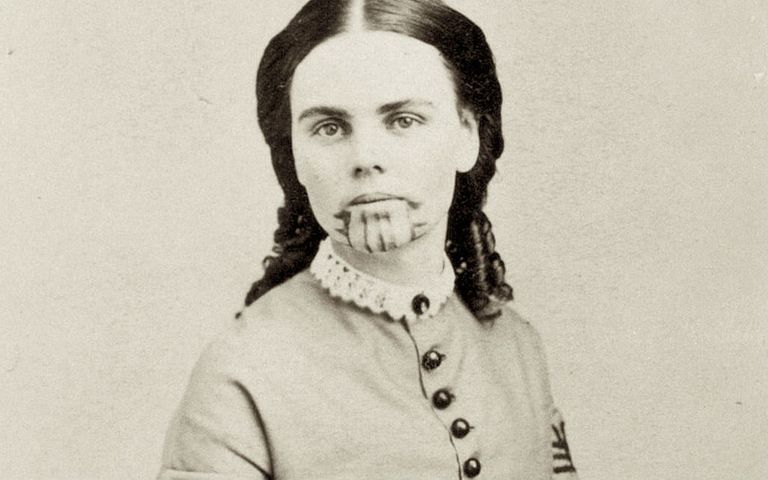 Wikimedia Commons
Wikimedia Commons
Operation Upshot-Knothole took place in the Nevada desert in 1953, and you can probably guess from the menacing mushroom cloud what the military was testing. This was the first time a nuclear artillery shell was ever fired!
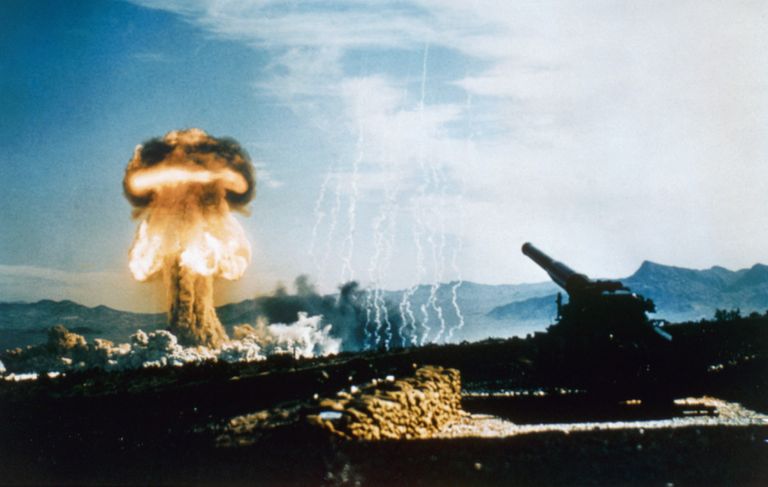 © CORBIS/Corbis via Getty Images
© CORBIS/Corbis via Getty Images
Sadly, the complicated equations on this blackboard will never be finished: This is a photo of Albert Einstein’s desk right after his death. It’s chilling to think how just hours before this, Einstein was sitting here with his pipe.
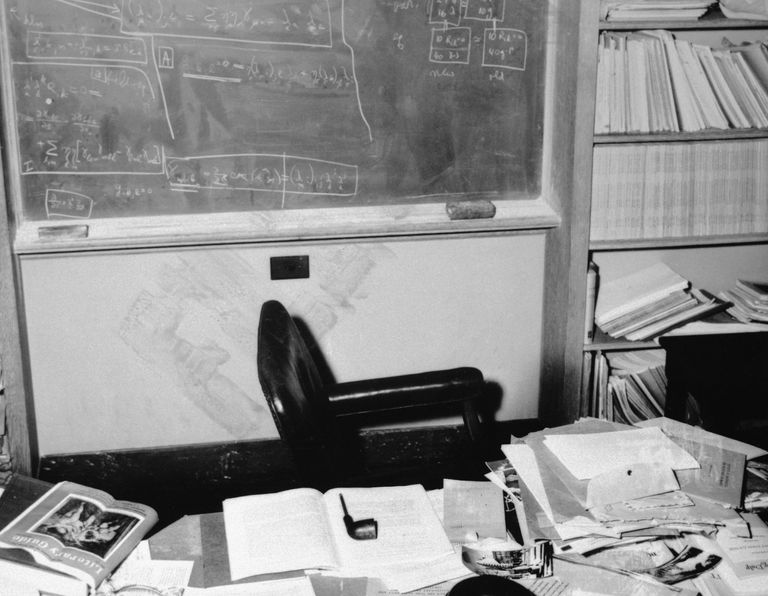 Bettmann/Getty
Bettmann/Getty
Is this the first selfie ever taken? Many historians think so, with the selfie-taker himself, Robert Cornelius, calling it the “first light picture ever taken.” The photo wouldn’t exactly fit on Instagram, but it’s a great slice of history!
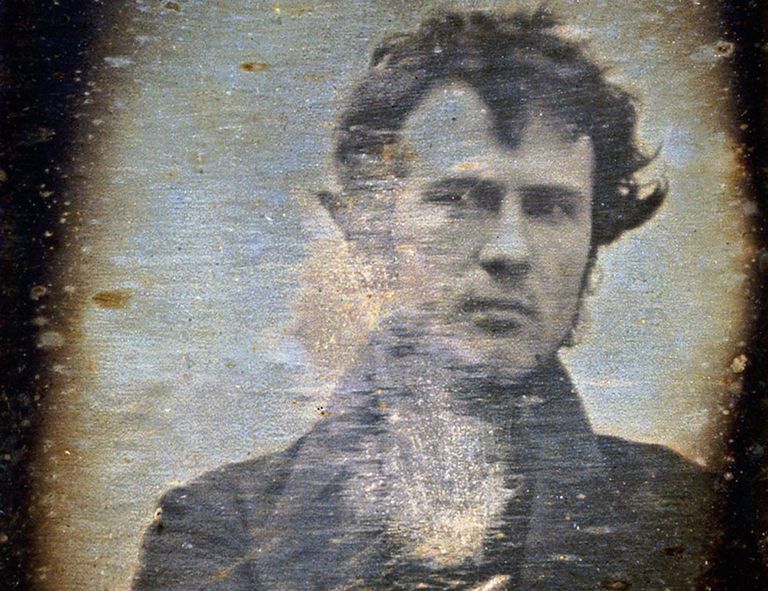
Not so long ago, flight attendants weren’t only known for their preparedness. Clearly, other, um, assets were required, such as always-styled hair and short skirts. Rumor has it that “stewardesses” were expected to retire when they turned 32!
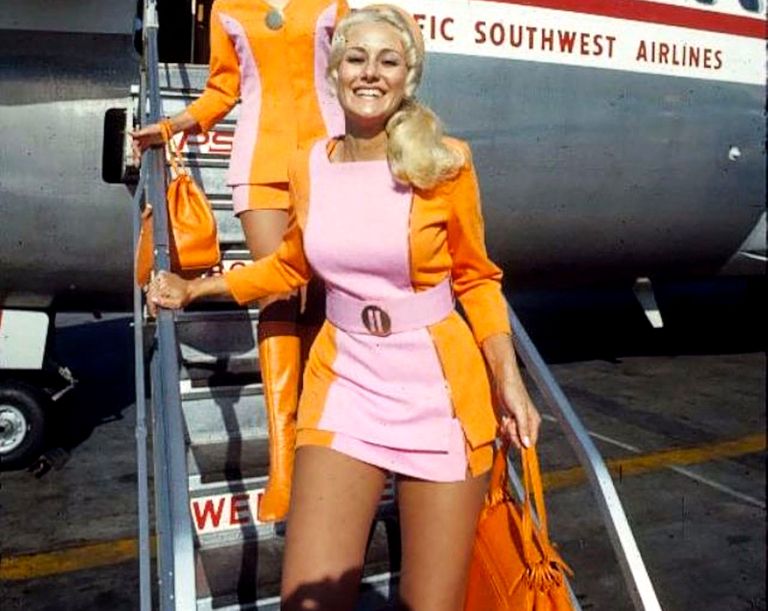
It’s always funny seeing photos of celebrities before they hit it big, but this one is particularly great. It shows the legendary Robin Williams before he earned his “legendary” status, when he was just a kid in Central Park working on his mime material.
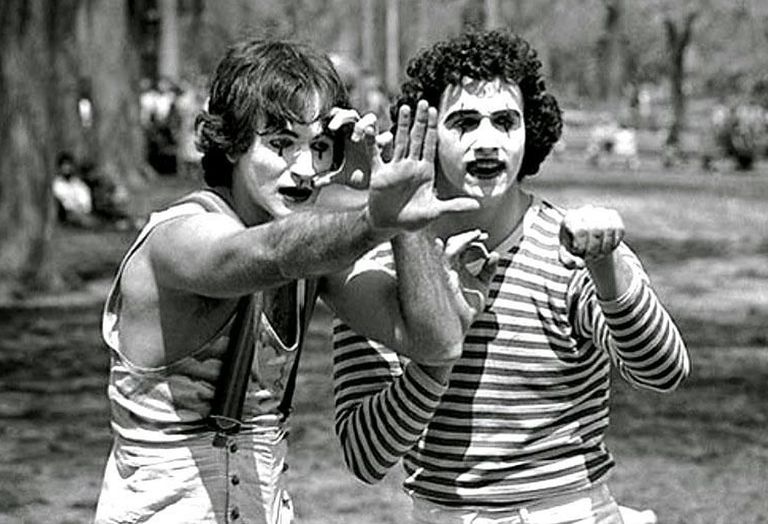
What makes this photo so chilling isn’t how the ultra-cool James Dean is in it — it’s how this picture was taken mere hours before the car crash that took his life. This may be his last moment ever on camera. At least he’s doing what he loved!
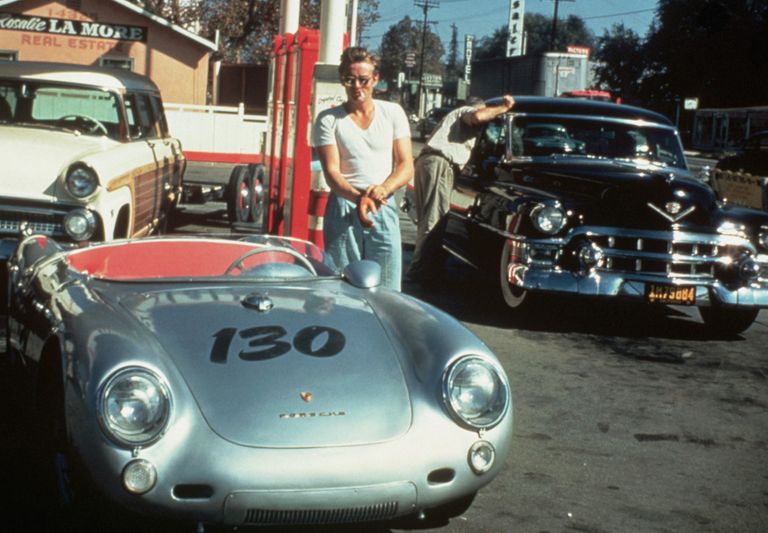 Bettmann/Getty
Bettmann/Getty
Talk about being in the right place at the right time. The farmer looked over his shoulder just in time to watch a test pilot parachute to safety out of his failing airplane. Our only question is, how was the photographer so ready for this?
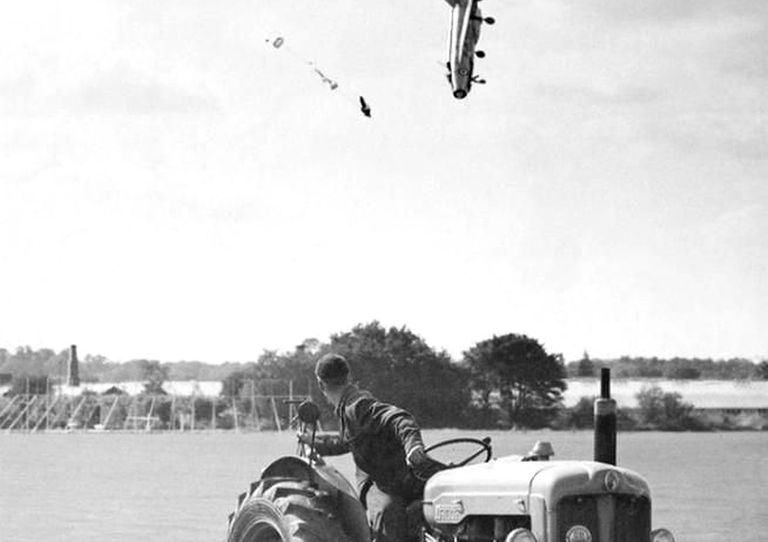
It’s easy to see why some people refer to this woman as the “Mona Lisa” of the 1800s. Taken by photographer Francisco Van Camp in 1875 Manilla, this captivating woman’s identity has been a mystery for almost 150 years.
![]()
Now this is what courage looks like. Dorothy Counts is a Civil Rights pioneer and the first Black person to attend Harding High in North Carolina. The harassment she endured was so bad that she transferred schools after just four days.
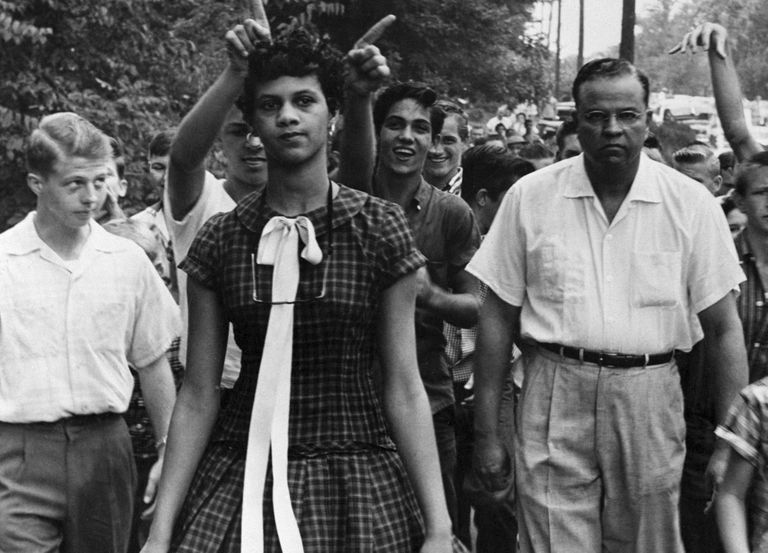 Bettmann/Getty
Bettmann/Getty
The only thing more American than baseball is Babe Ruth hitting a home run. We can’t be sure if that’s happening here, but the fact that a 1930s-era camera managed to capture a quick shot of Babe in action is pretty amazing all on its own.
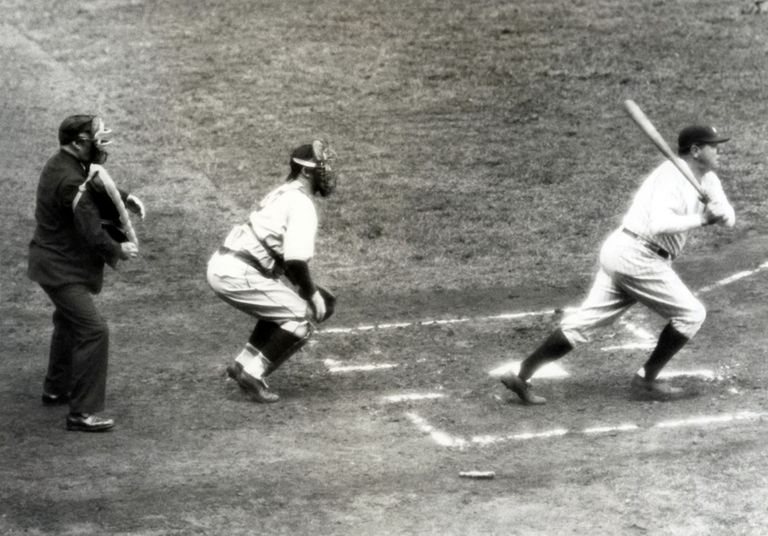 B Bennett/Getty Images
B Bennett/Getty Images
This is Joan Trumpauer Mulholland, a young Freedom Rider and Civil Rights activist in the early ‘60s. At 19, she was arrested and put on death row for two months before being released. Now 78, she’s still a prominent figure in the Civil Rights movement!
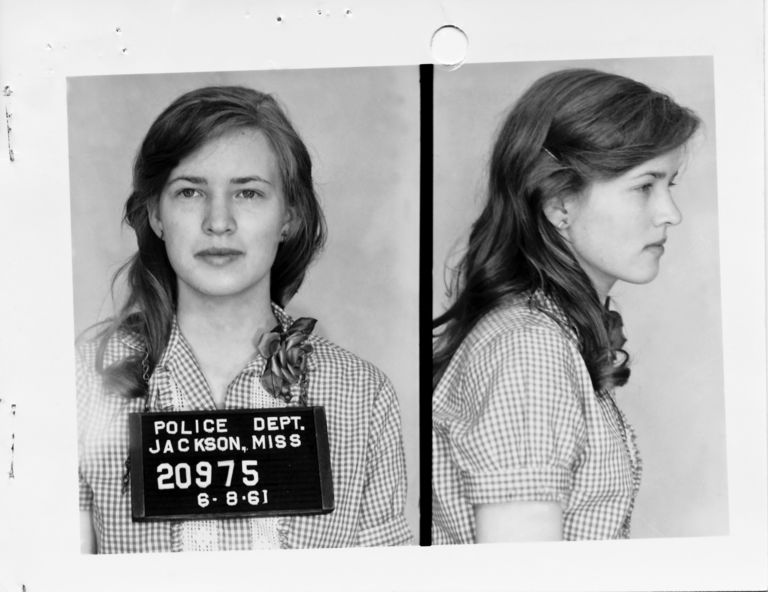 Mississippi Department of Archives and History
Mississippi Department of Archives and History
1950s Hollywood was filled with sex symbols, and Brigitte Bardot is one of the most unforgettable. Here she is mugging for the camera on a beach in Cannes, seemingly unbothered by the starstruck crowd forming around her.
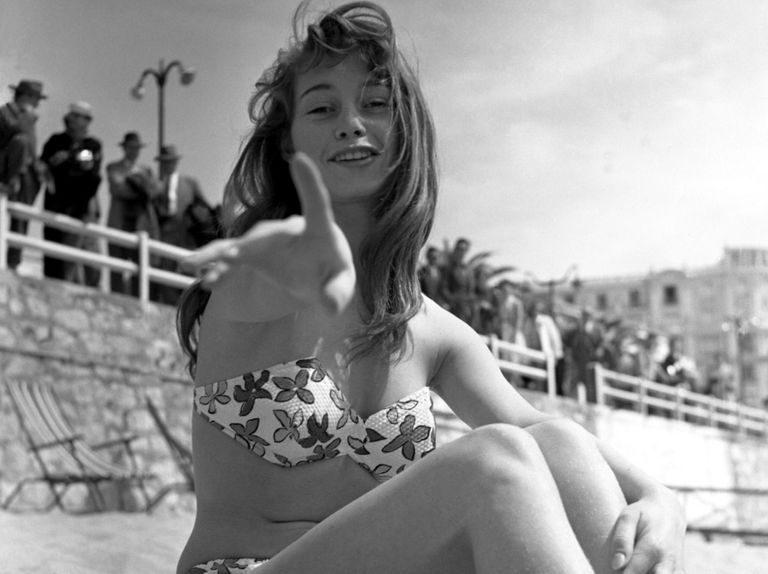
People from all walks of life went to Woodstock in 1969, but it wasn’t exactly the kind of place you’d expect to find a little kid. Red bandanna man clearly thought otherwise, though, as he brought his tot along for the psychedelic ride.
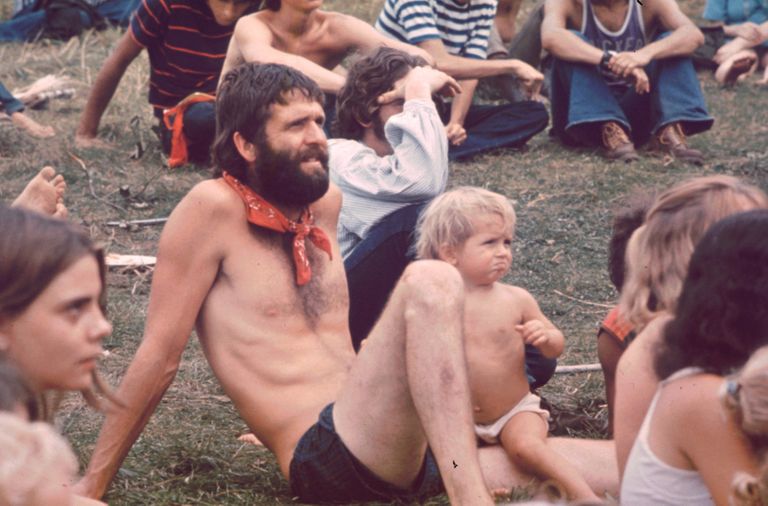
Ham the Astrochimp was the first hominid to breach the Earth’s atmosphere and live to tell the tale (well, you know what we mean). He survived the entire 16-minute, 39-second long mission with just a bruised nose.
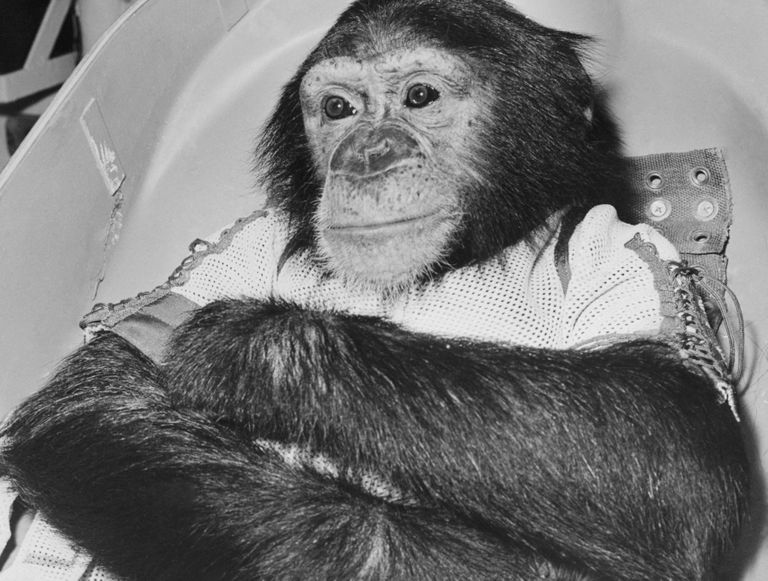 Bettmann/Getty
Bettmann/Getty
What happens when two icons shake hands? Only a lucky few were witnesses to the moment Queen Elizabeth met Marilyn Monroe, and both women seem to be pretty starstruck in this 1956 photo.
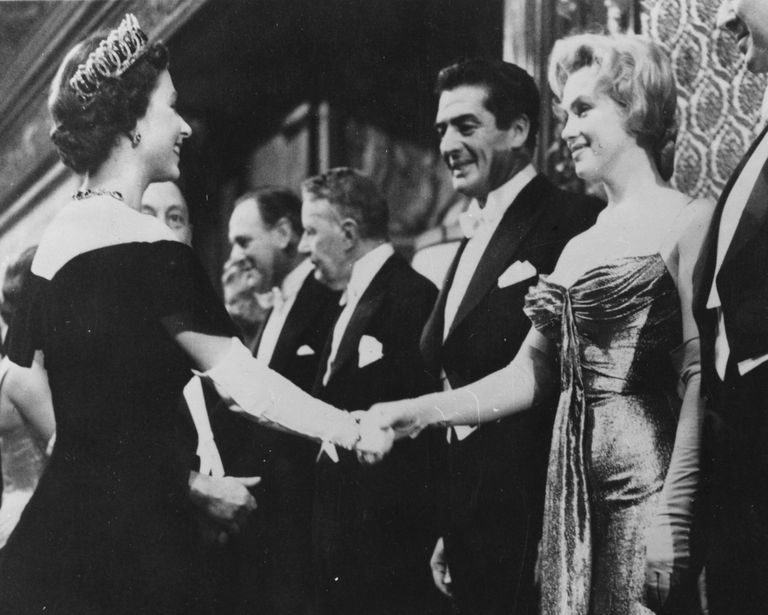
These women and children were liberated from a Holocaust train bound for the Bergen-Belsen concentration camp, where they likely would have died. Some of the most noticeable details in this picture are the shared looks of desperate, surprised joy across these women’s faces as they stumble up a hill.
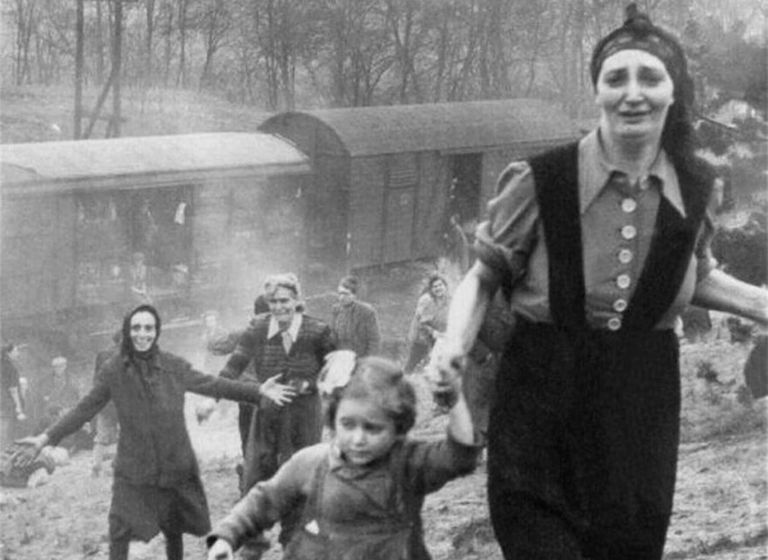
In 1928, Allen Swift bought this brand-new, mint-colored Rolls-Royce. At age 102, he was still driving the same vehicle! Before he died in 2005, he donated the car to Lyman & Merrie Wood Museum of Springfield History. So, the two have longevity and hardiness in common.
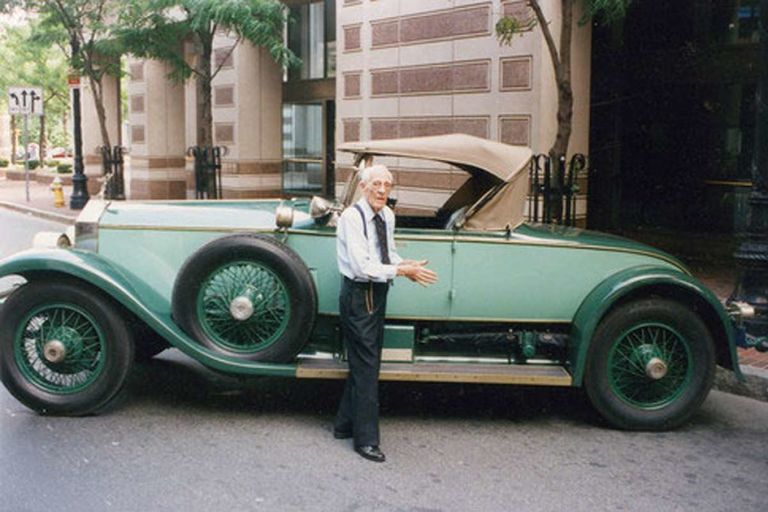
In the early hours of December 15, 1969, in 12 countries, identical billboards and posters appeared. Each one proclaimed, “WAR IS OVER! Happy Christmas from John & Yoko.” Ironically, the Vietnam War lasted until 1973.
 Bettmann / Contributor
Bettmann / Contributor
Believe it or not, this giant hippopotamus is just a baby! Clearly, the guy behind the wheel (or…reins?) is a hippo-whisperer, because that’s the only way we can think of that he got the hippo to cooperate. This must have been a very leisurely ride!
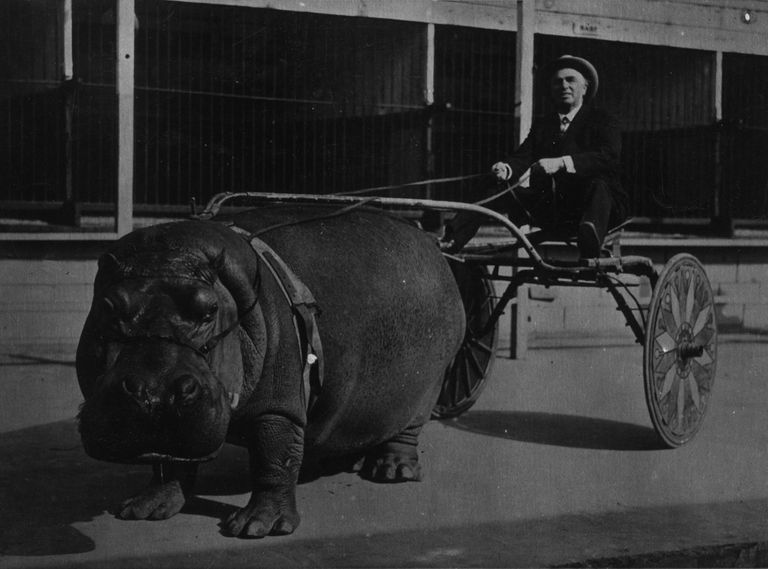 Topical Press Agency/Getty Images
Topical Press Agency/Getty Images
When prohibition started in 1920, Americans weren’t happy. One way booze-smugglers would transport their alcohol through town was using trucks with false backs. This faux lumber truck is a great example.
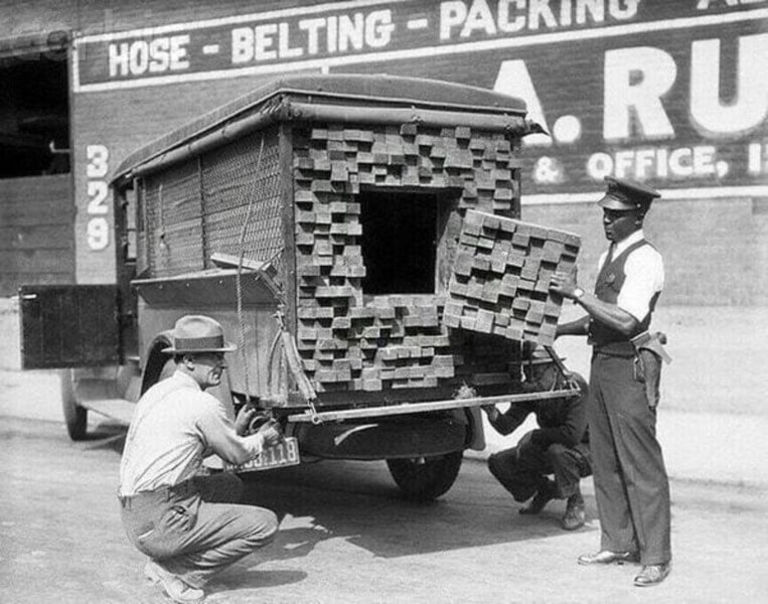
Another prohibition trick was wearing cow shoes. These footwear extensions mimicked cow hooves and could mask the direction in which the moonshine operator traveled. Many moonshine operations were deep in the woods, so these were excellent cover.
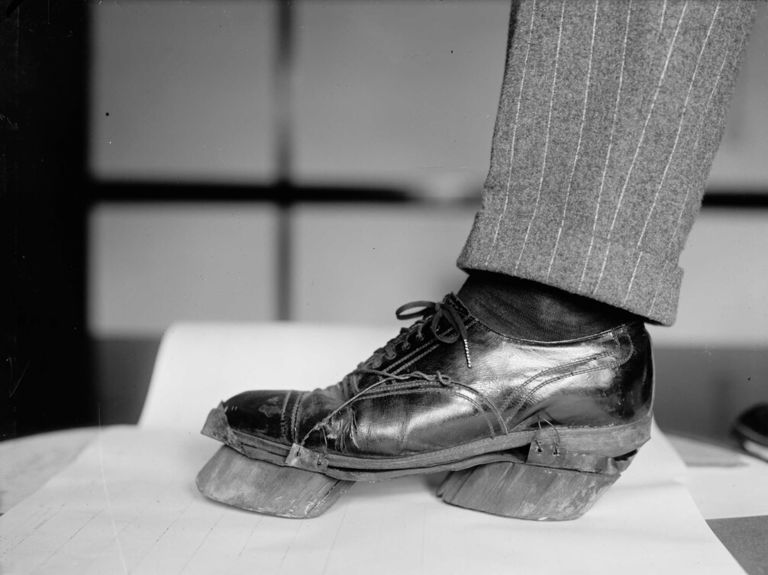
A fiery lake of lava surrounds an erupting volcano as several camouflaged planes seemingly hang in the smoky air. This isn’t the cover of an apocalyptic novel. This scene is from the 1944 eruption of Mount Vesuvius.
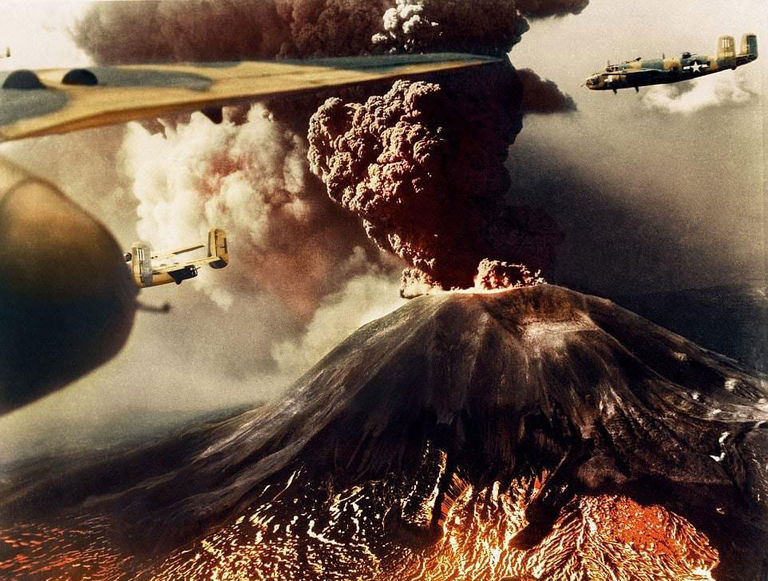
Soldiers of the Queen’s Guard are notorious for being statue-still, no matter how much someone tries to get them to flinch. The opposite happened during the Color Parade in 1970, when the heat (or nerves) caused this poor soldier to keel over.
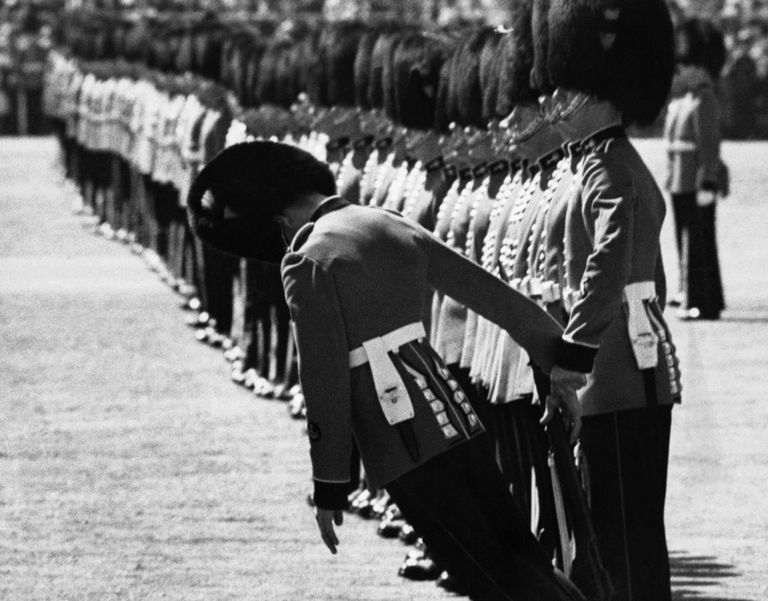 © Hulton-Deutsch Collection/CORBIS/Corbis via Getty Images
© Hulton-Deutsch Collection/CORBIS/Corbis via Getty Images
Even though we’re all used to walking around in masks, this photo still sets an eerie tone. Back in World War II-era London, intense gas masks like these were essential…even on quiet afternoon strolls with the baby.
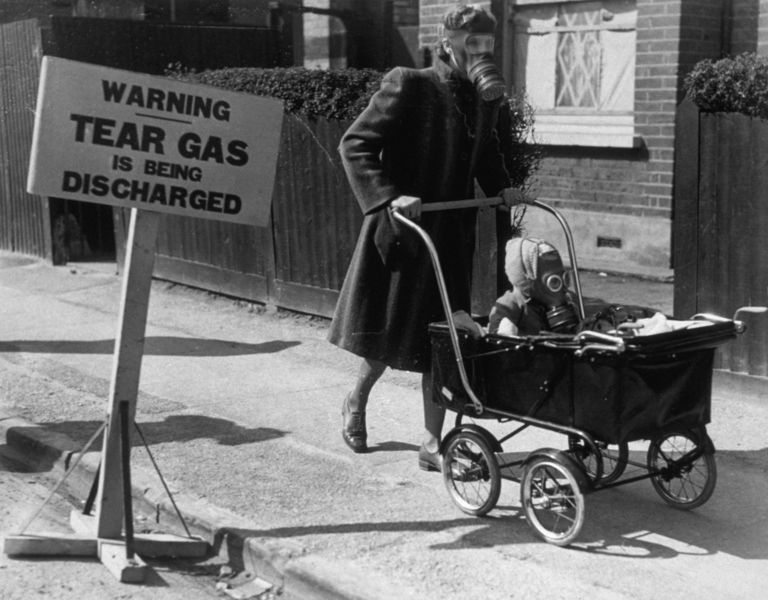
When Lt. Col. Robert Stirm returned to Travis Air Force Base in Fairfield, California, after serving in Vietnam, his family was ecstatic to see him. The picture went on to win a Pulitzer prize.
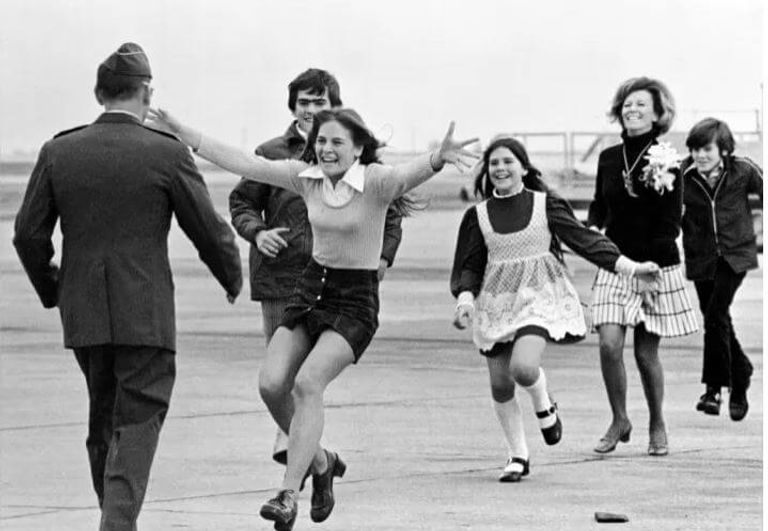
The first ambulance in Brooklyn appeared on the roads in 1873. This was before the advent of cars, so this vehicle ran on literal horsepower — a lone carthorse would carry this ambulance through the borough to the person in need.
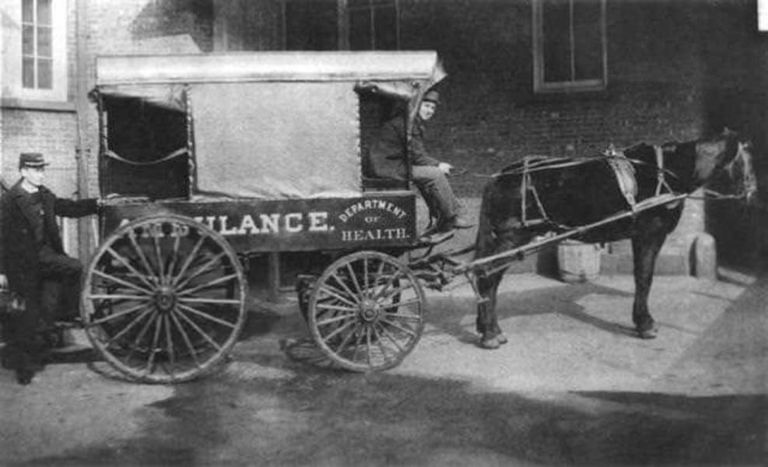
World War I was a brutal global conflict. It was so hard on the soldiers that, in 1914, they called a truce for Christmas and organized a soccer game. Axis powers played on one side and Allied countries were on the other.
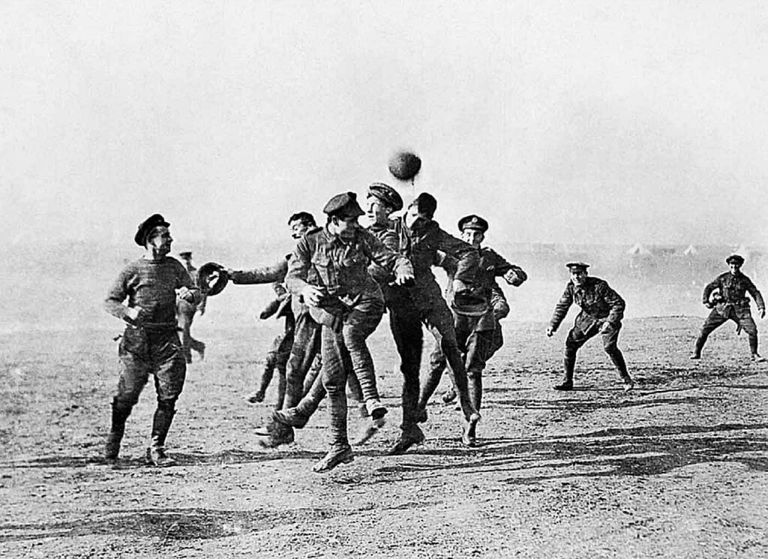
Rosa Parks is famous for her non-violent bus seat protest. What isn’t as well-known is her mugshot that was taken when she was arrested. This started the Montgomery Bus Boycott in December 1955.
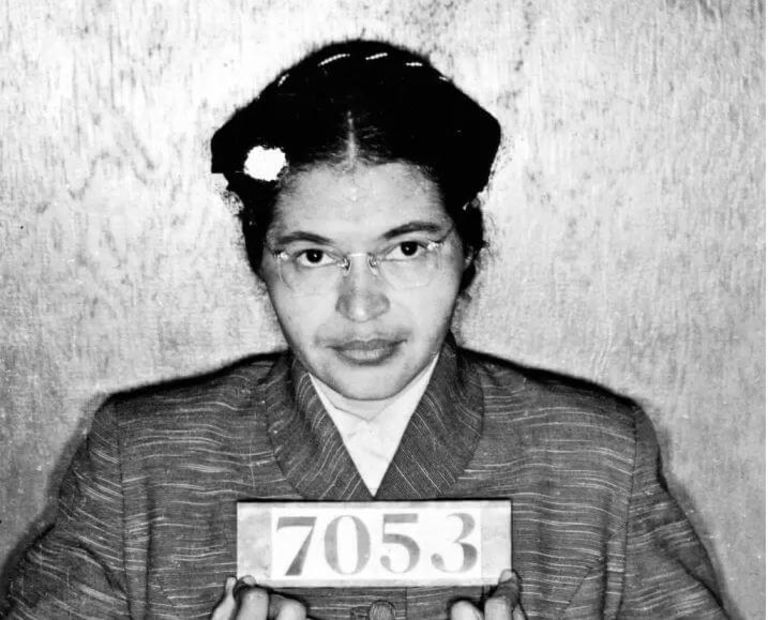
Muhammad Ali won the gold medal in the 1960 Rome Olympics for boxing. He competed in the lightweight class during the games because this event took place when he was just 18 years old.
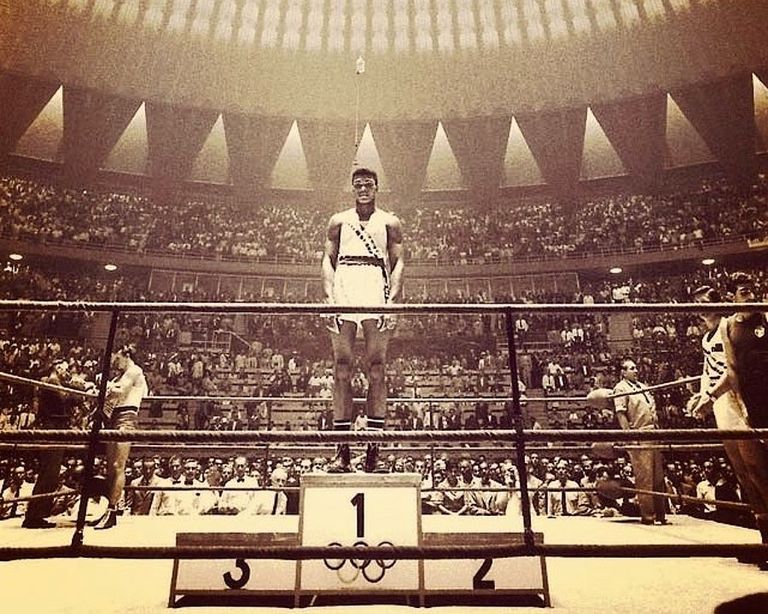
On June 4, 1989, the Chinese government fired into crowds of protestors in what became known as the Tiananmen Square massacre. The image of the defiant man standing in front of the tank and refusing to let them around him was taken days after.
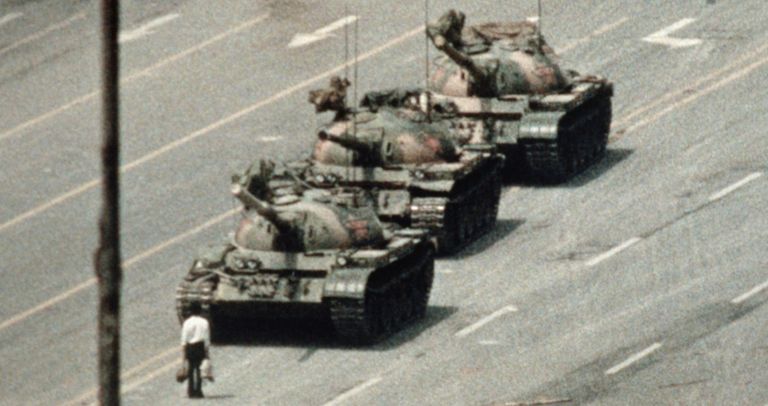 Bettmann / Contributor
Bettmann / Contributor
The strongman holding the smaller man in his hand may not look familiar at first glance, but if you’ve watched the original Star Wars movies you may be familiar with him. This is David Prowse, who was the body for Darth Vader.
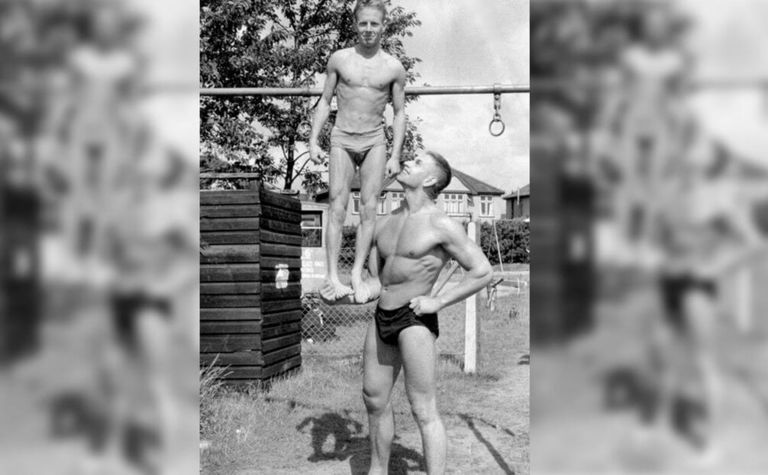
Millions of men who fought in Vietnam didn’t want to be there. This young soldier with the phrase “War is hell” written in black ink across the front of his military helmet. In 1968 alone, 16,899 Americans — enlisted and drafted — died.
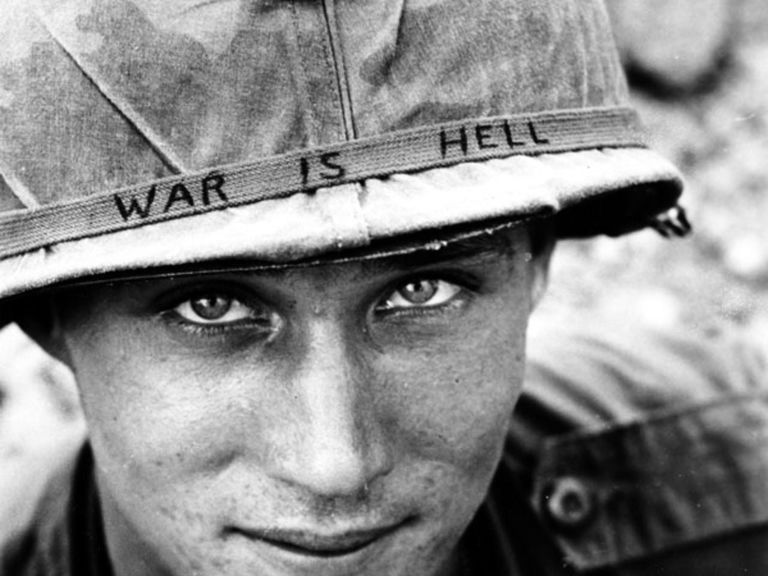
This image captures the last interaction between a father and son. President John F. Kennedy visited his dad at their Massachusetts home, and, several days later, he was assassinated in Dallas.
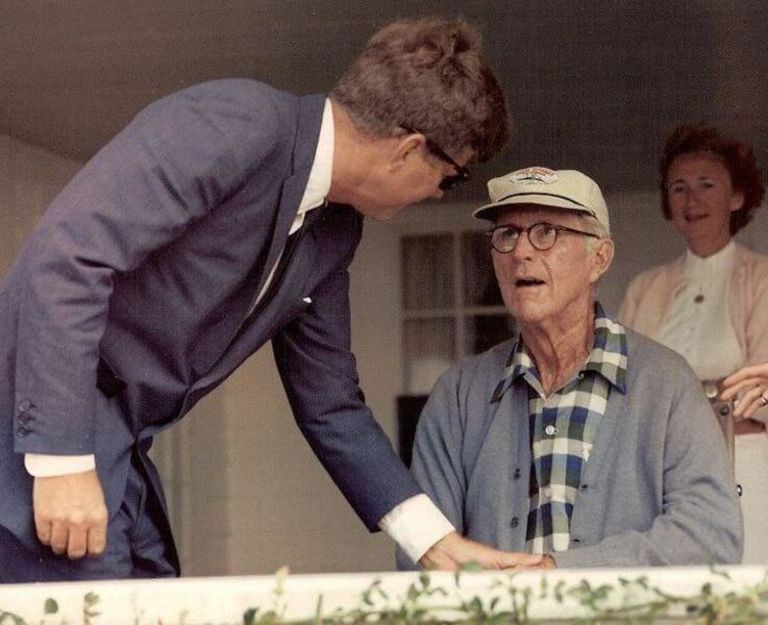
Children weren’t protected by many labor laws in the early 1900s. In Cotton Mill Girl from 1908, this young girl seems lonely as she runs her cotton spinning machine. Lewis Hine caught this image during a tour of the factory.
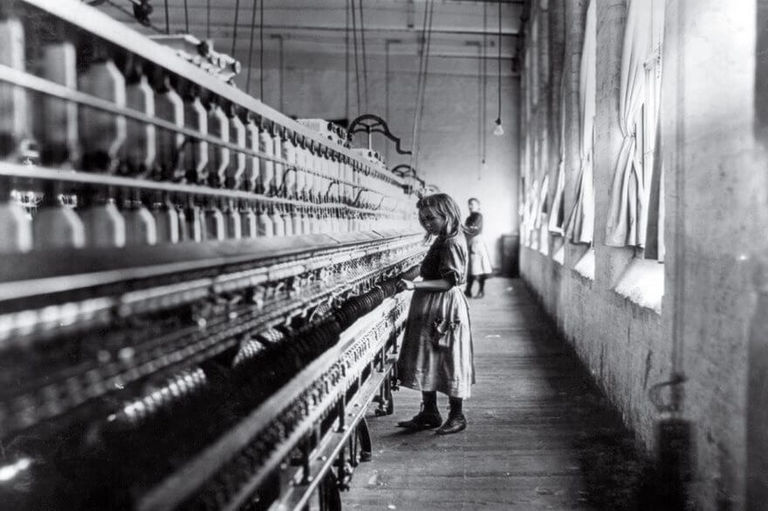
The first day of school is always a nerve-wracking day for parents. Imagine how Ruby Bridges’ parents must have felt as their daughter was escorted into William Frantz Elementary School by a federal agent.
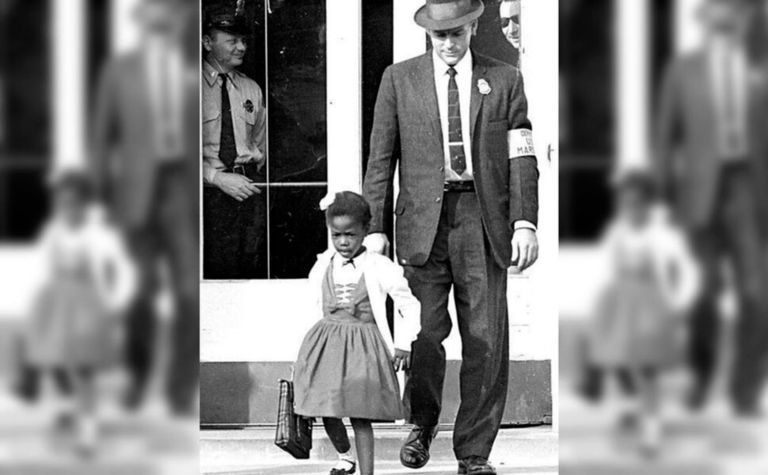
After the attack on Pearl Harbor on December 7, 1941, Asian people who lived in the U.S. were subject to discrimination. This beachgoer is flying the pre-Communist Chinese flag to show she’s not Japanese — the people who were being put in camps.
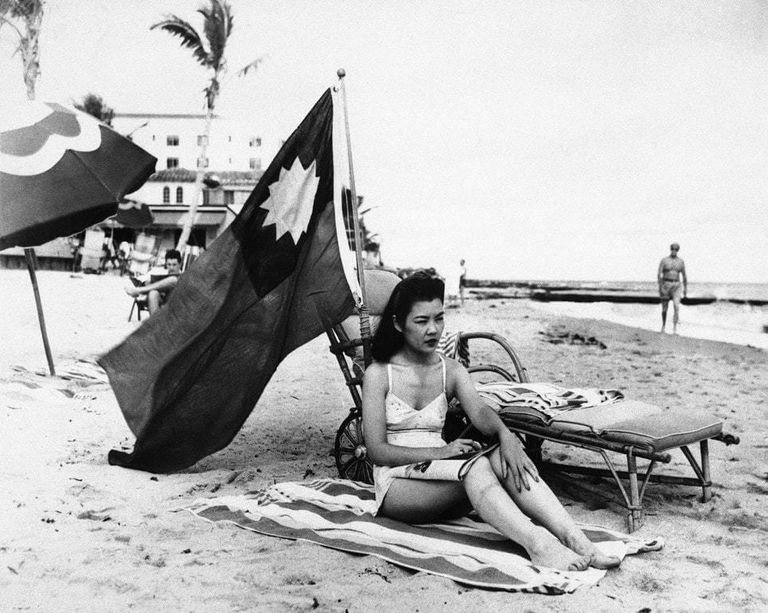
During Vietnam-era protests, people who were against America’s involvement in Vietnam would calmly place flowers into the barrel of police officer’s guns. Seeing these images draws a stunning parallel to our current unrest.
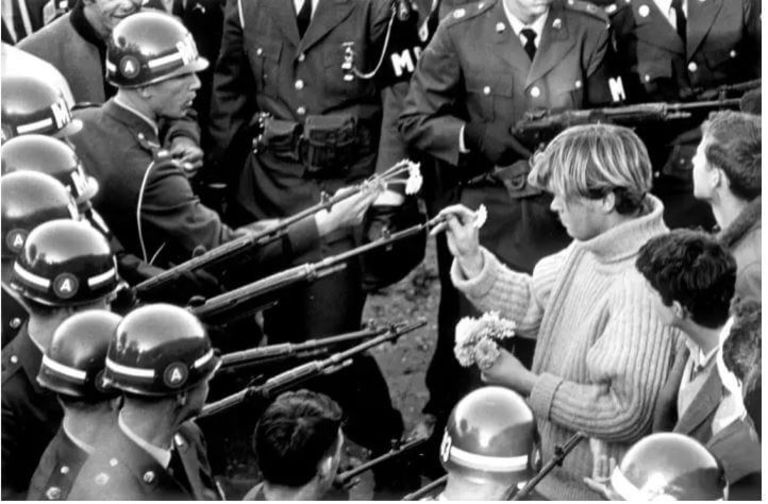
Elizabeth Eckford was another student who had a terrifying time trying to get inside her school safely. She was a part of the Little Rock Nine in 1957. Furious white protestors surrounded the entrance and hurled hateful, racist phrases at the brave teenagers.
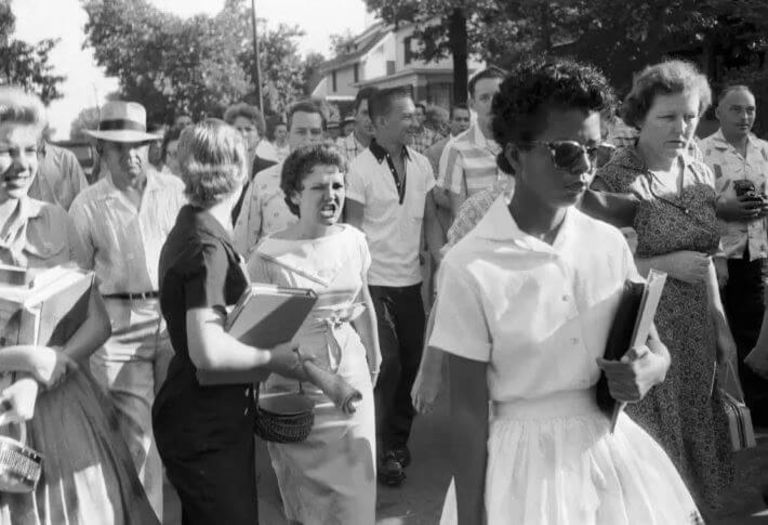
Chess was so popular in the Soviet Union that, after World War II, a Soviet School of Chess was built. The game was considered a sport; this picture shows a human chess match watched by a large crowd.
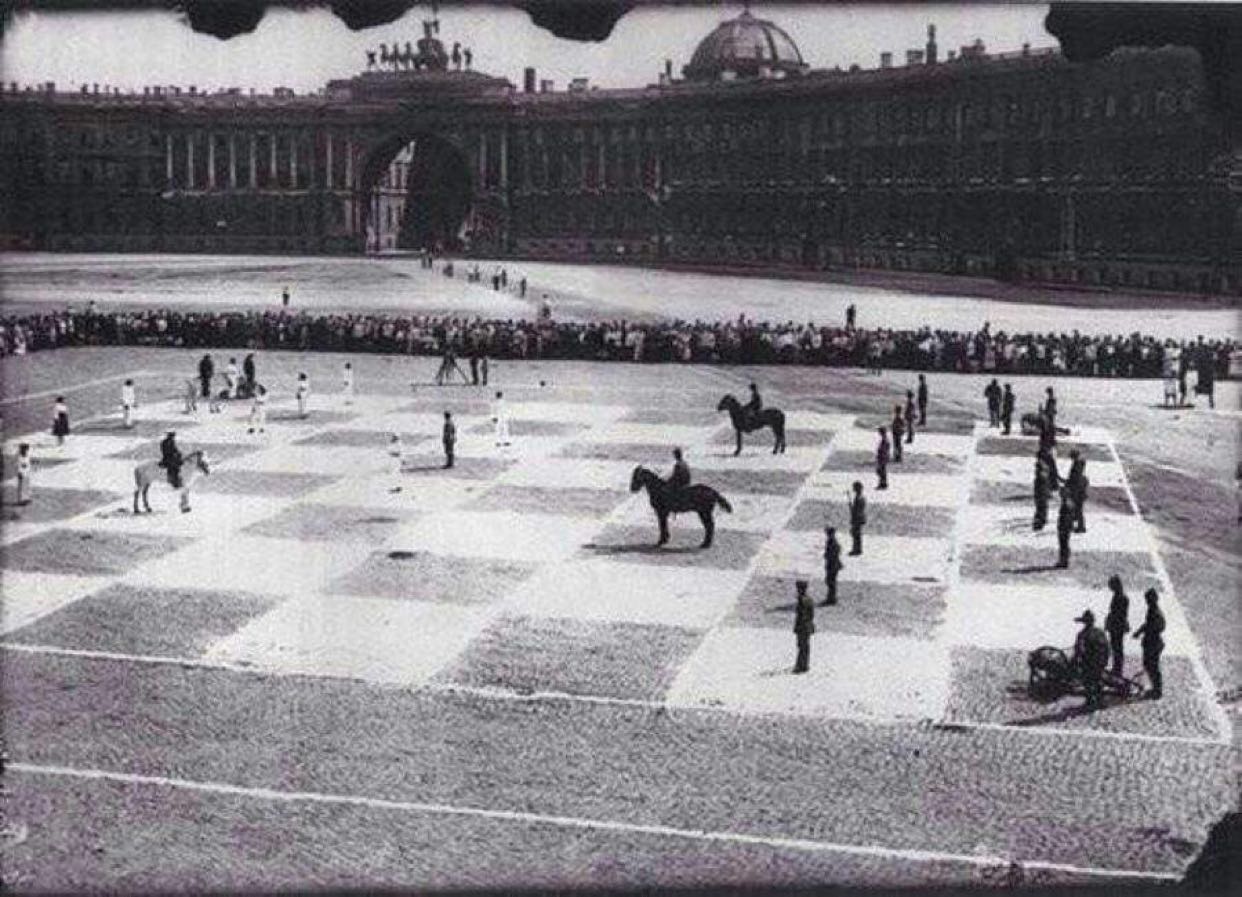
A beggar runs alongside a carriage transporting King George V and his friends. Whether or not the beggar knew exactly who he was addressing is unknown, but it didn’t seem like the men had any interest in giving him a lift.
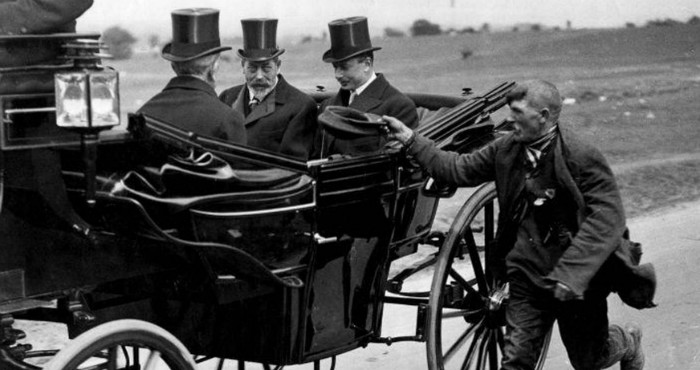
his young boy is reading a book in front of a London bookshop that was demolished by an air raid in 1940. This photo speaks to the citizens’ desire to lead lives that were as normal as possible amid wartime chaos.
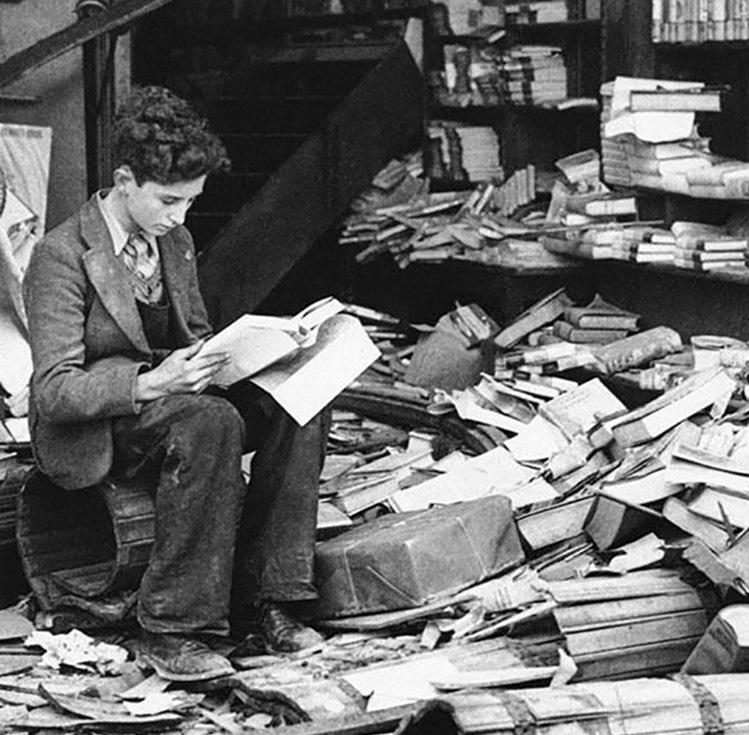
This picture was taken during the Irish Civil Wars of the 1920s. Families who could afford “machine-made bread” were usually well-off financially because it meant they could afford items at a store rather than making them cheaply at home.
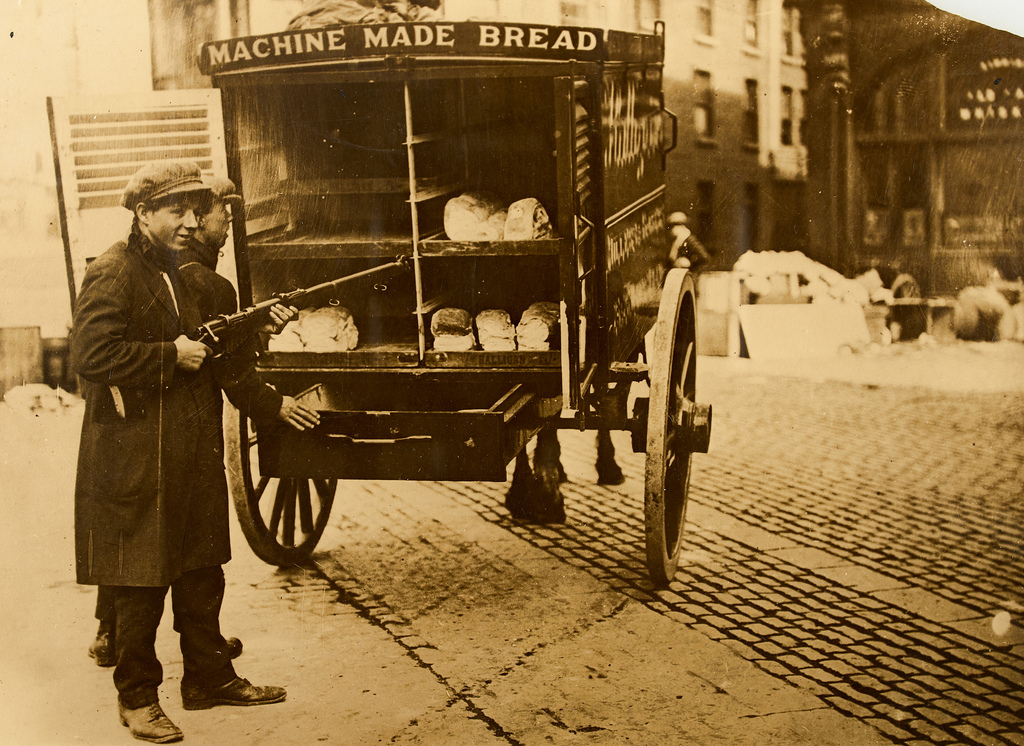
Here, a janitor sweeps up paper at the New York Stock Exchange immediately after Black Tuesday, the day of the Wall Street crash in 1929; it would lead to the Great Depression soon after.
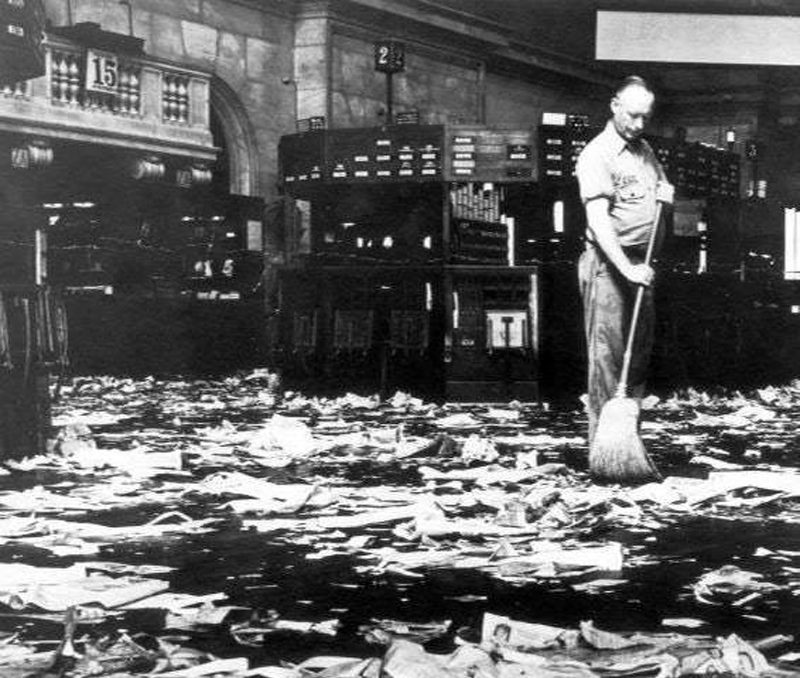
Joseph Stalin was a dictator known for bloodshed and repression, so after he died, people everywhere were relieved. This restaurant located in Washington, D.C., gave away free borscht, a traditional eastern European dish, in honor of his passing.
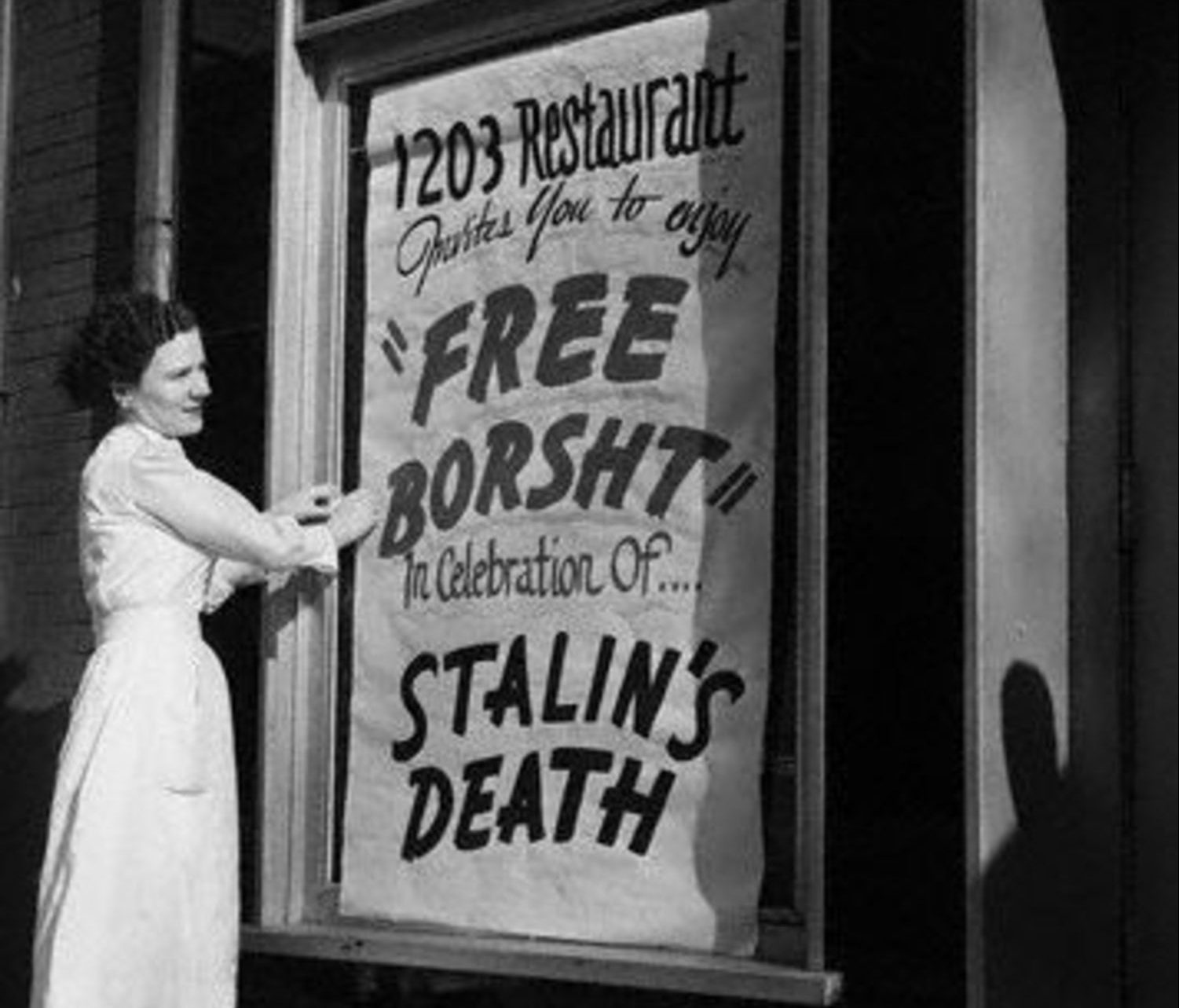
During the 1950s, the United States carried out atomic tests in the Nevada desert just 65 miles away from Las Vegas. Here, a group of people enjoying a warm summer day can actually see a mushroom cloud forming in the distance.
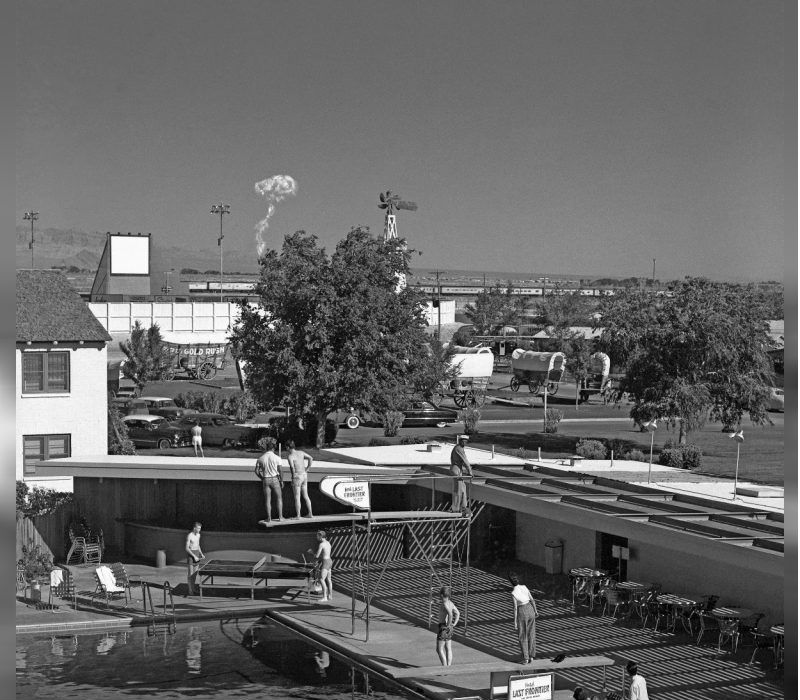
Check out this gnarly way of traveling around town! This guy is wearing roller skates that are actually powered by a tank of gasoline worn like a backpack. This was definitely a unique invention, but not one that ever caught on (thank goodness).
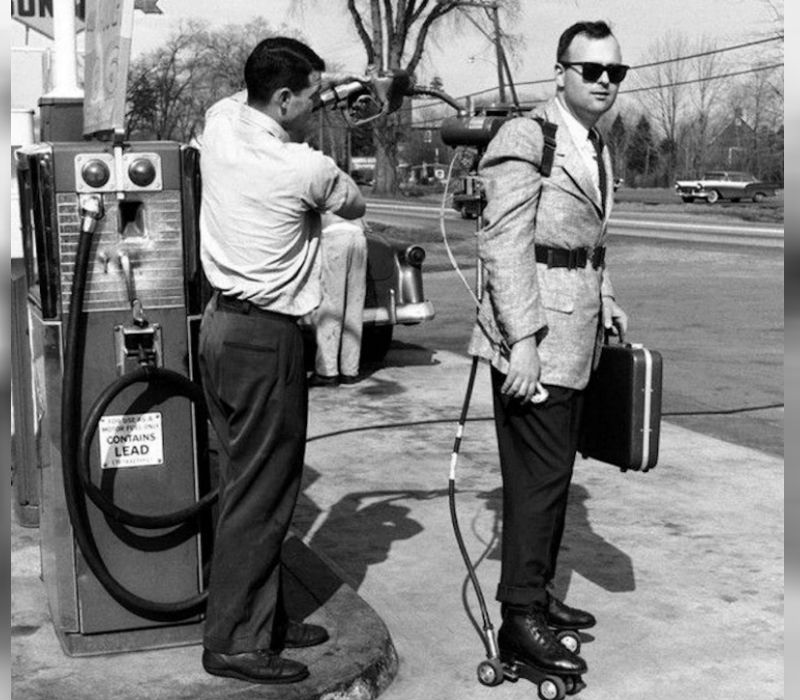
Not long after the Berlin Wall was erected, a 20-year-old man named Heinz Meixner completed a daring escape into West Berlin with his future wife and mother-in-law smuggled inside his vehicle.
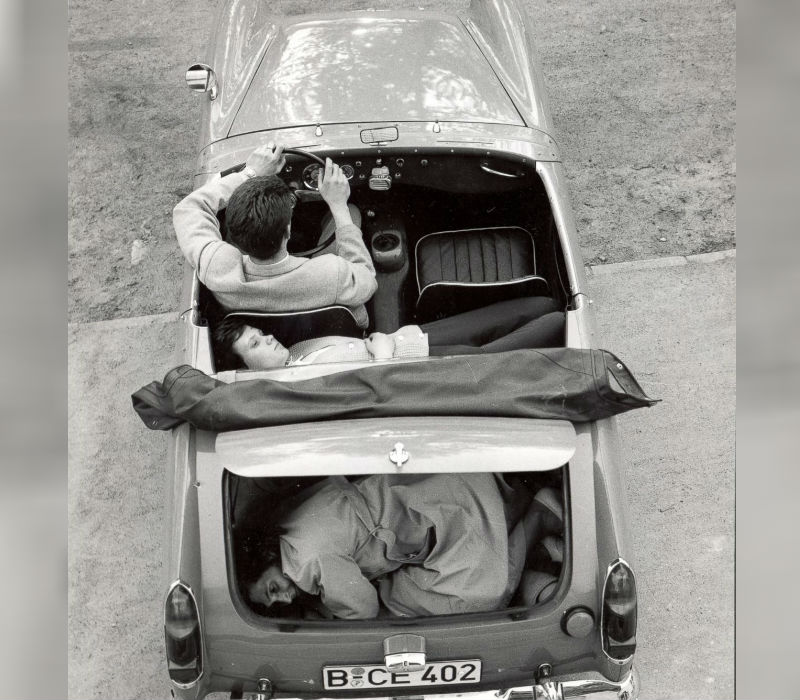
The man in this photo is Cudjoe Kazoola Lewis, and he was the last known survivor of the Atlantic slave trade. He was smuggled into the country illegally from Togo, West Africa, in 1859; fortunately, he gained his freedom a few years later.
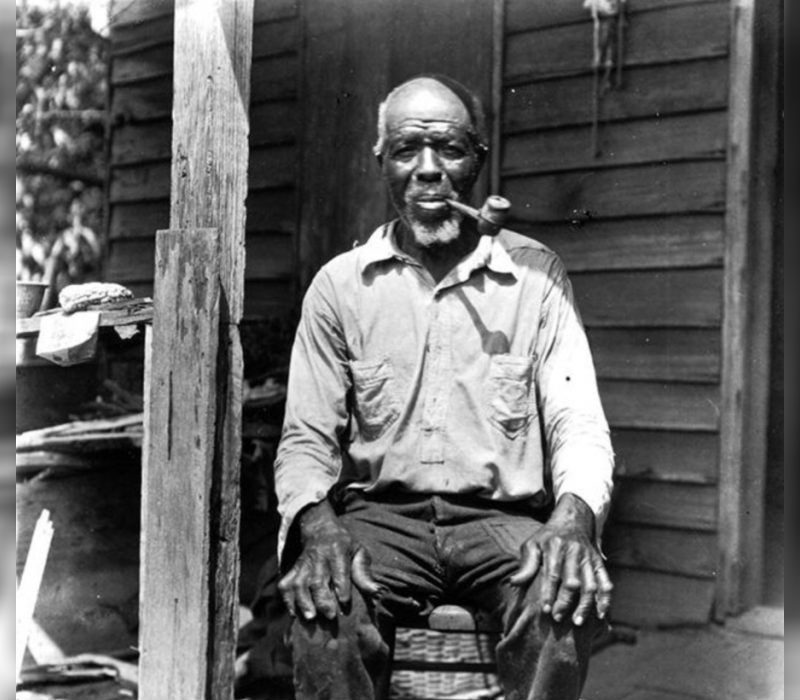
Here is a group of people imbibing alcohol shortly after Prohibition laws were repealed. It was the first time in 13 years that alcohol could be sold legally, and everyone was eager to indulge without fear of prosecution.
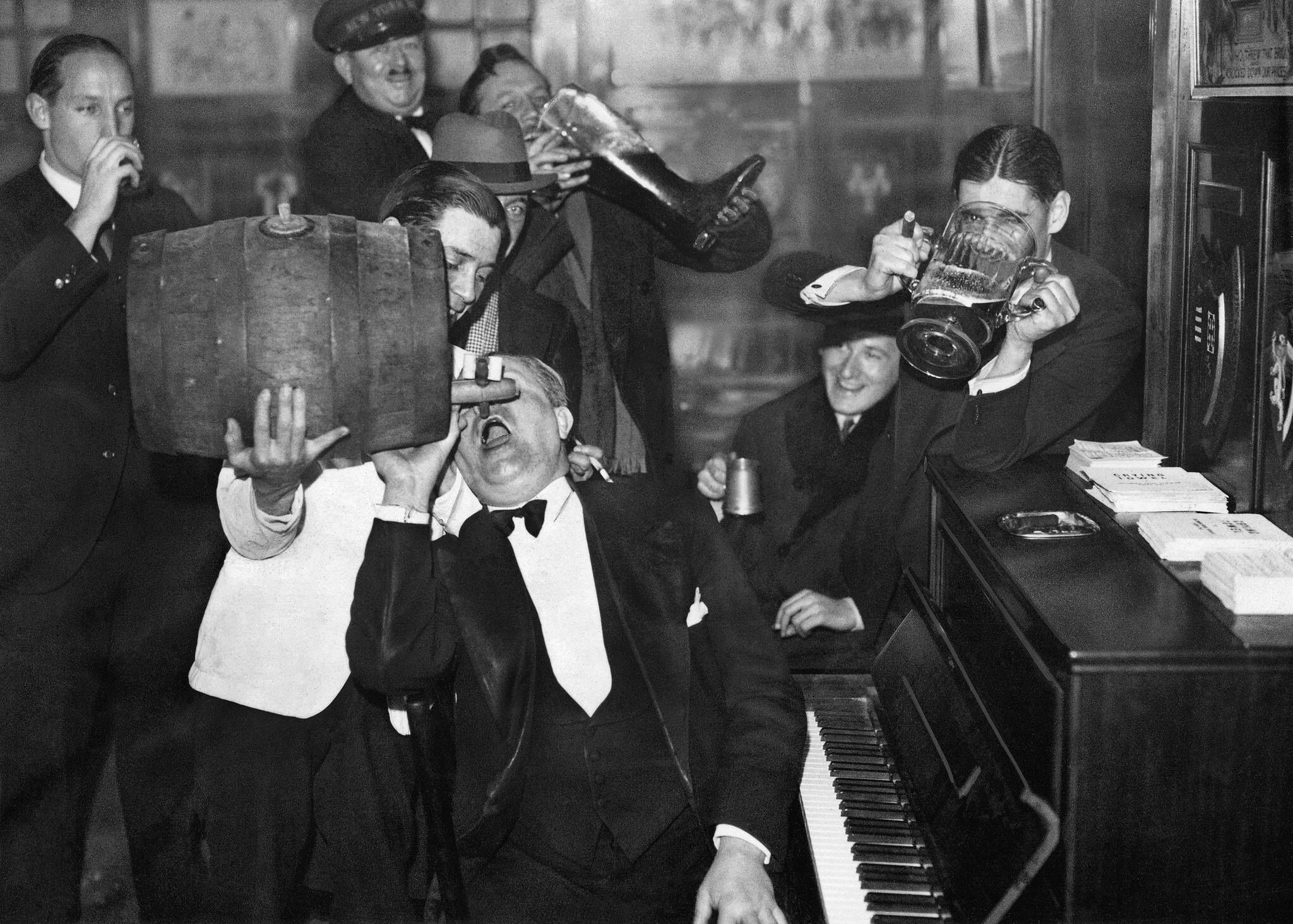
When the Berlin Wall was constructed in 1961, it separated communities, friends, and families. In this picture, parents hold up their children to “visit” with grandparents on the other side of the wall.
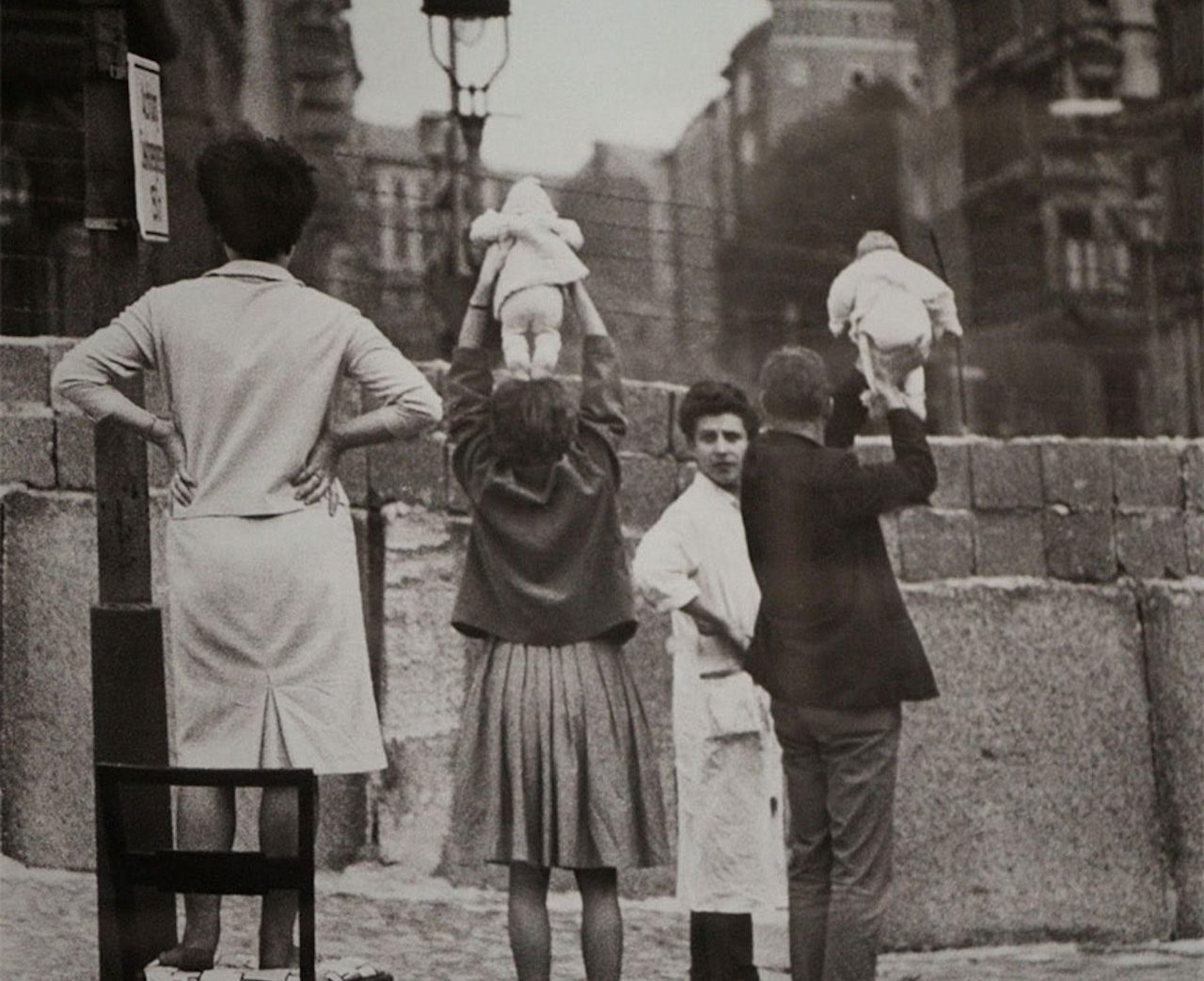
This is a photo of the massive Guinness Brewery in Dublin, Ireland, in 1910. Amazingly, Ireland is no longer the largest consumer of Guinness. In 2007, the sales in Nigeria overtook Ireland!
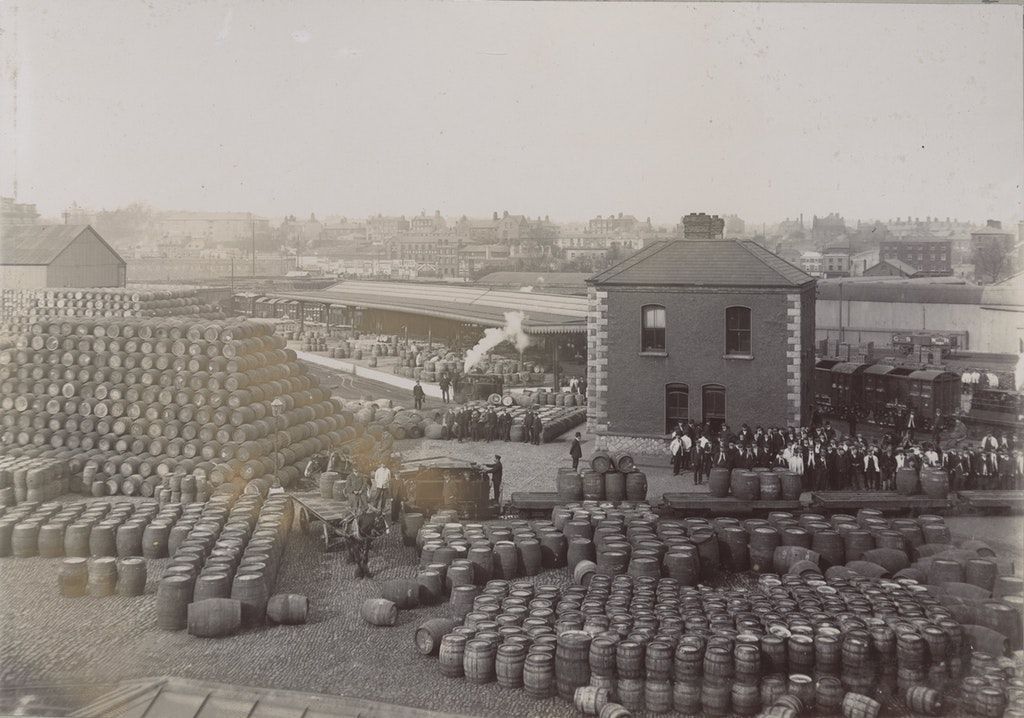
This picture, which was taken in 1949, shows Princess Elizabeth II—before she was a queen—inspecting the Women’s Royal Army Guard at a Royal Agricultural Society show. Little does she know, the woman on the end was so nervous she fainted.
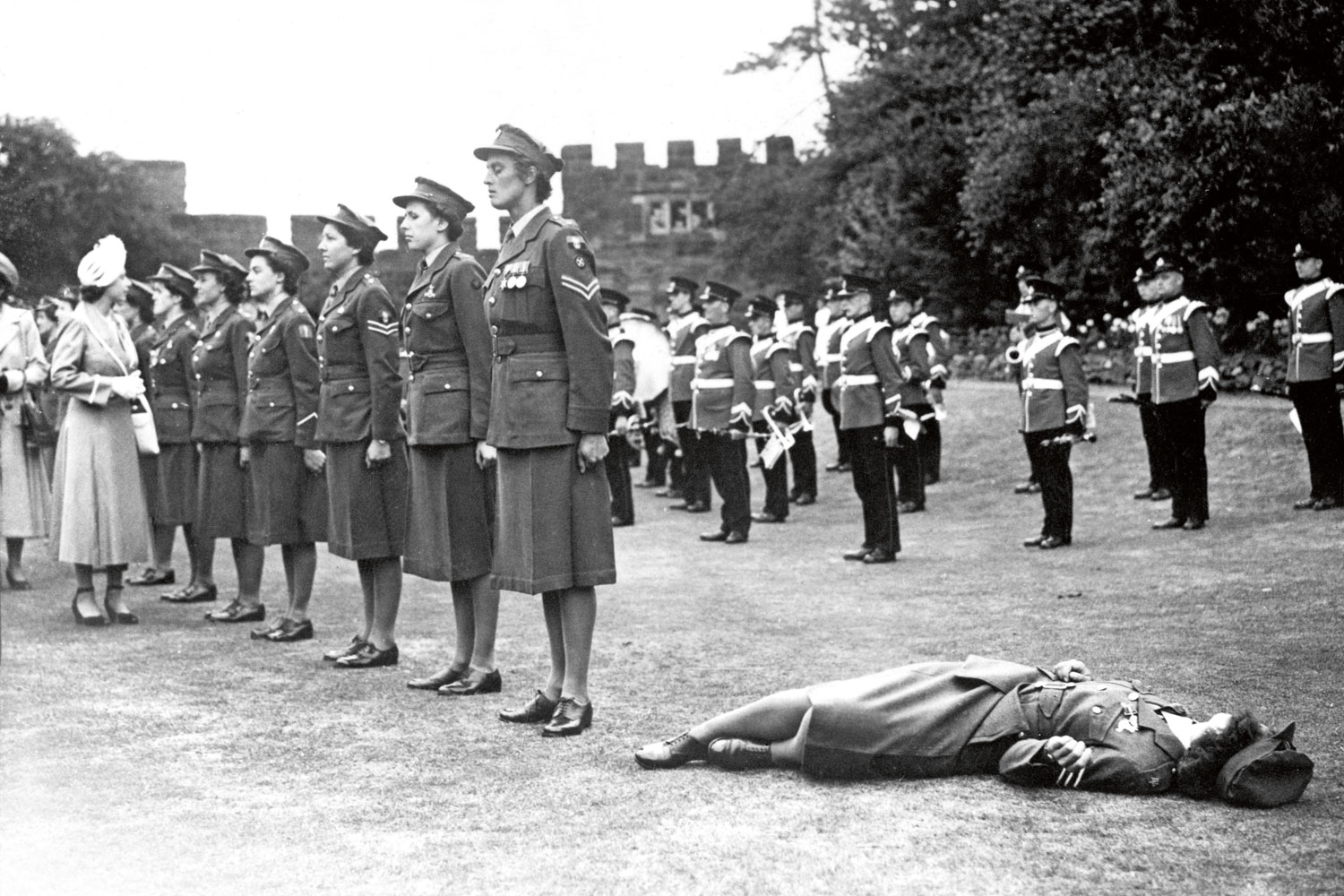
In March 1979, the hijab law went into effect, meaning Muslim women were required to wear their head scarves every time they left their homes. Thousands of women protested the law, but without success.
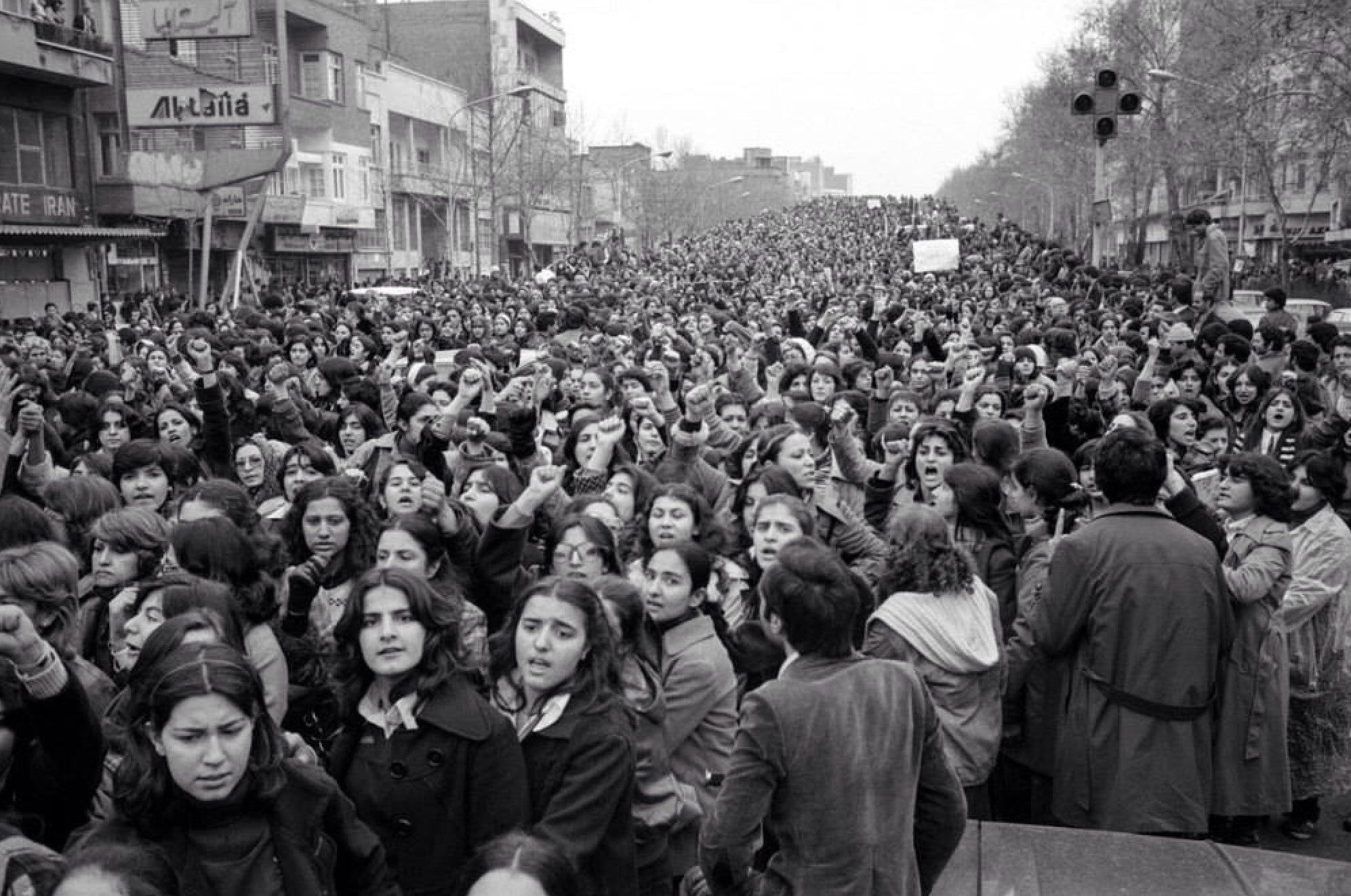
Before the Environmental Protection Agency was established in 1970, pollution in New York City was at an all-time high. This picture was taken in 1966 when a three-day smog set in that claimed the lives of 168 people.
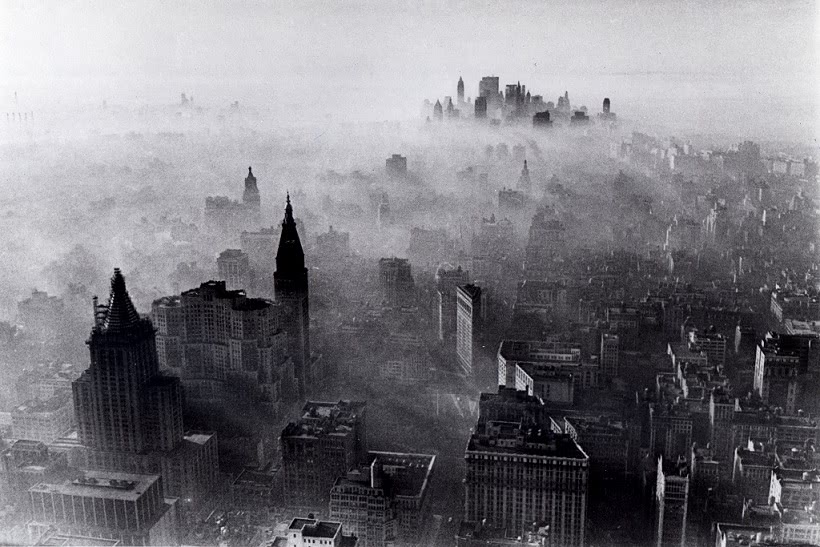
This incredibly upsetting picture shows a wooden crate full of wedding bands from Holocaust victims. It’s nearly impossible to fully grasp just how devastating the event was for all—but especially Jewish—civilians.
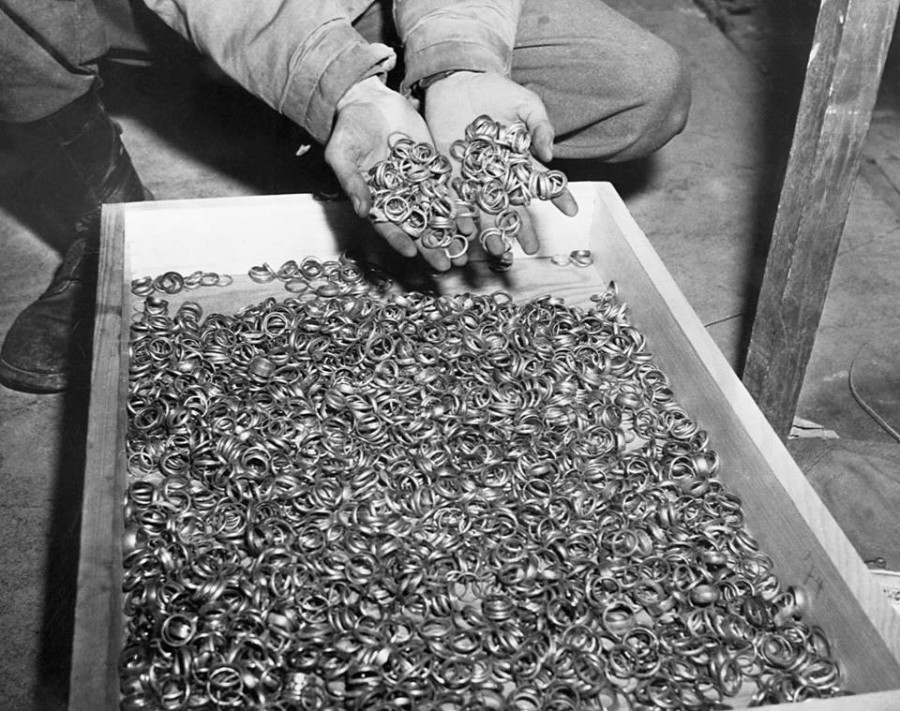
Even though the Civil Rights Movement in 1963 allowed for African Americans to vote, many white police officers still used intimidation tactics to dissuade them. Here, an officer snaps photos of voters in Mississippi in order to intimidate them.
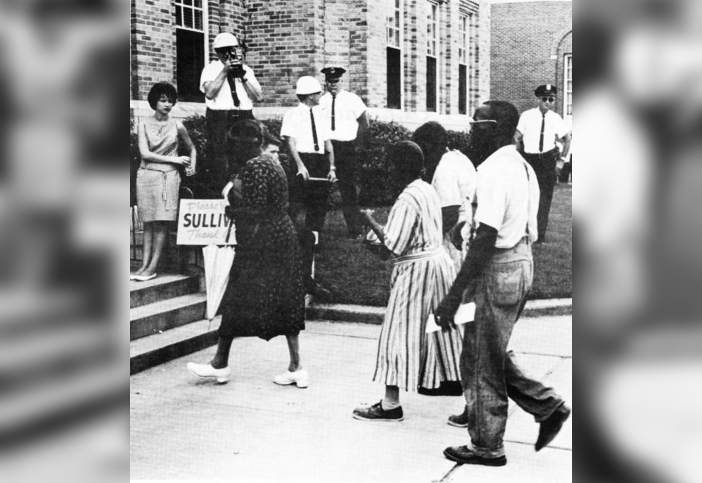
This group of people was displaced by the 1937 Ohio River flood, and they’re lining up to receive assistance. Meanwhile, behind them stands an incredibly ironic sign advertising how amazing it is to live in America.
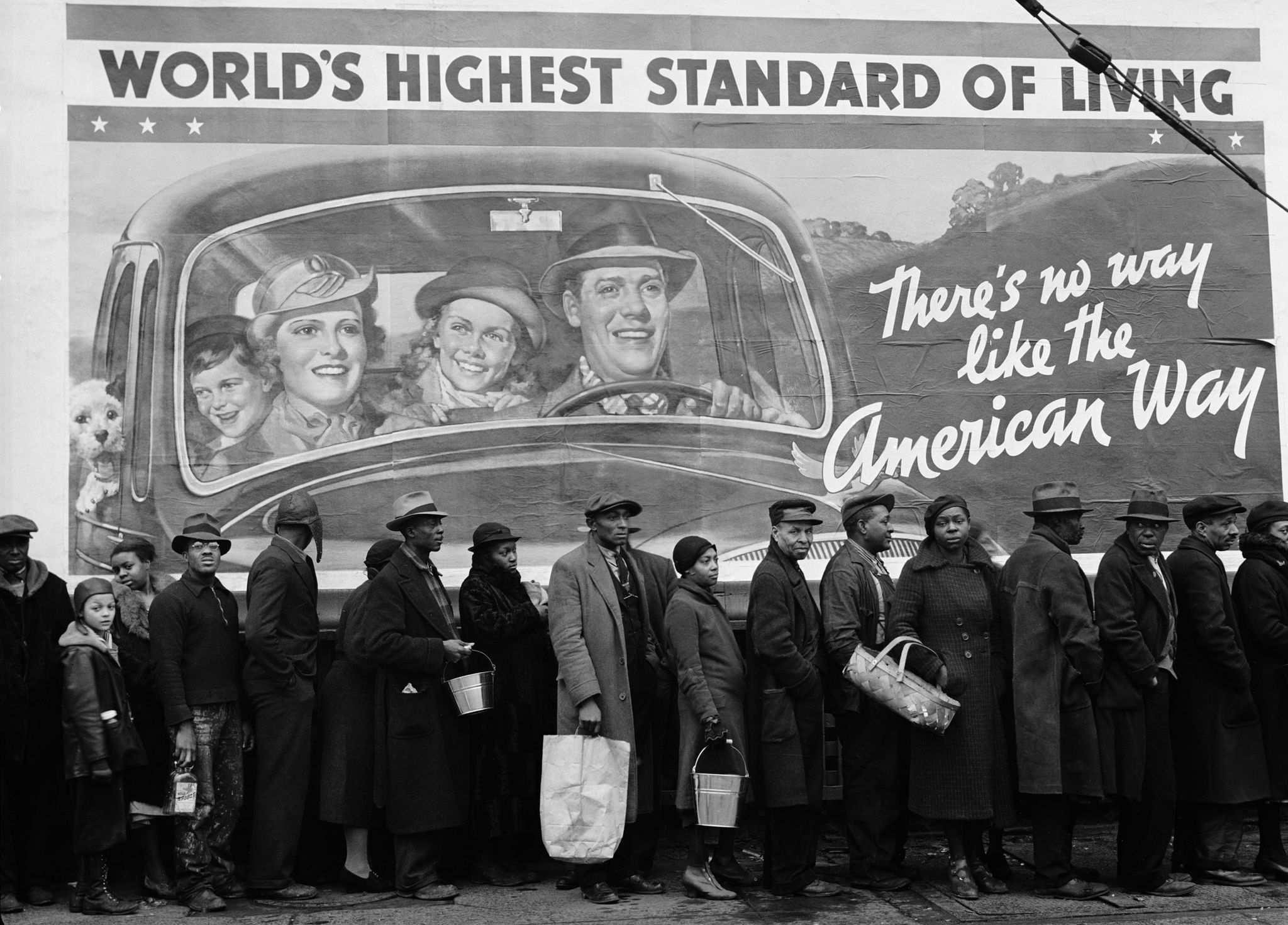
The post Photographs That Captured Significant Turning Points In Human History appeared first on Eternally Sunny.
